The statement in this post's headline is one that I hear quite often when I show my pictures to people, whether it's family or friends.
Usually, I quickly switch to something else on my phone or computer, or whatever I was using to present my pictures on, and change the subject. Because I know what the next part of their sentence is going to be, if there is one: "but it doesn't look like the real forest/street/beach/sky".
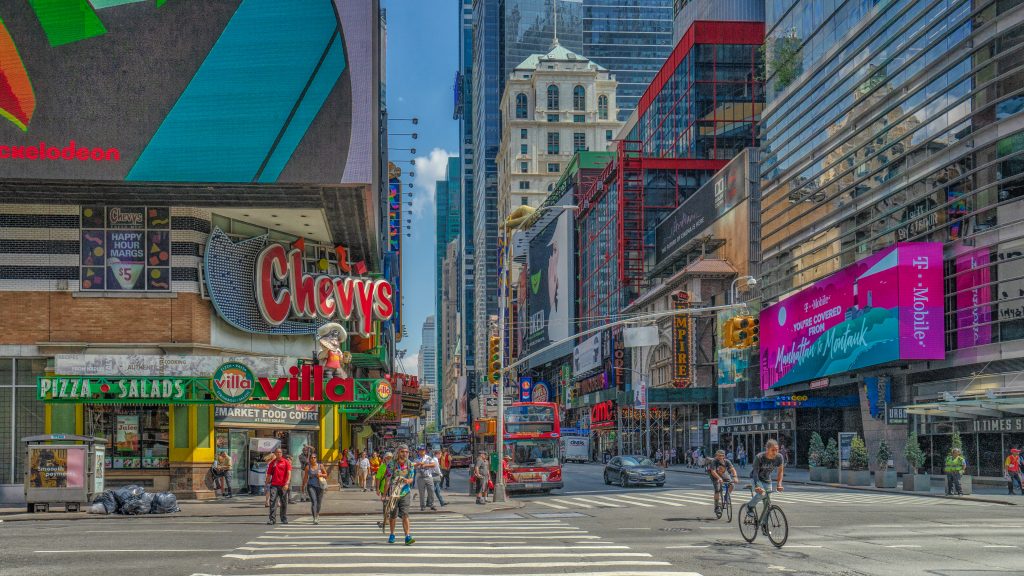
It's never a good thing for an artist to have to explain their art to the viewer. If they don't get it, they don't get it. Not everybody has the same taste. You can't please everyone. Yada yada, yada.... But I can't help feeling that they are missing the point. My objective when creating an image is not for it to exactly resemble what I saw with my eyes, it is for it to resemble what I felt in my heart and soul... and to have the viewer feel that too. If you are not open to letting yourself be emotionally affected, but only look at whether or not it matches what you perceive as "reality", it's your loss.
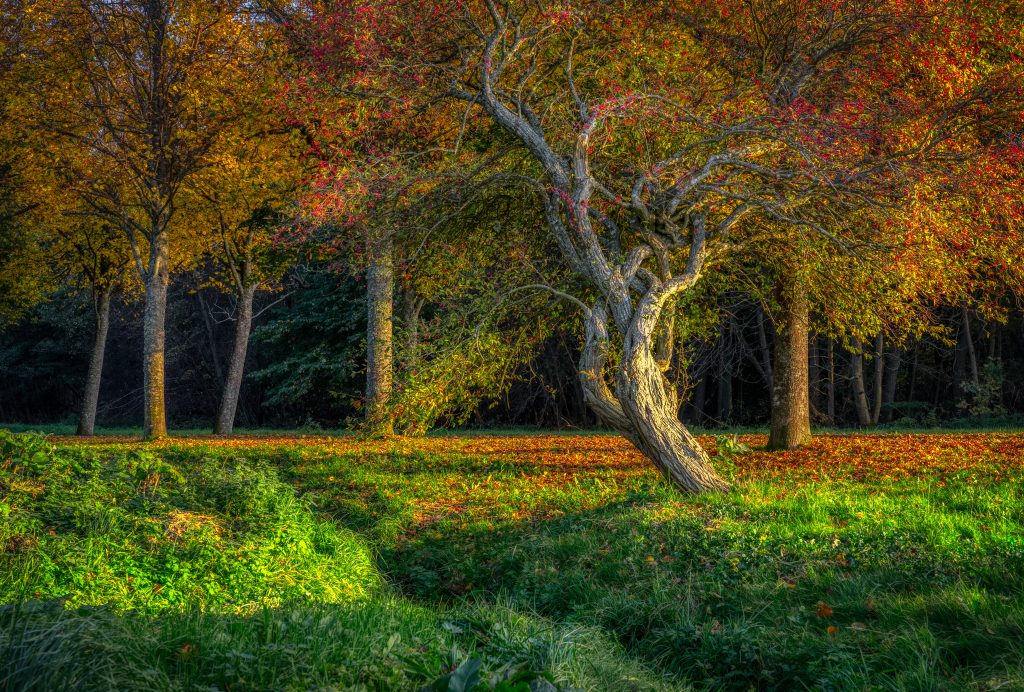
The thing is, if I look at a picture that exactly resembles what I saw with my eyes, it will not affect me in the same way it did when I was in the situation. Why? Because it's a picture! It's not reality. Reality has so much going for it that it becomes an uneven match against an image on a screen or on a wall. Reality has size, it has three dimensions, it has movement, it has sounds and smells, it has the viewer being in the middle of it.
So, in order to compensate for those deficiencies, an image must have something else that reality didn't have, and that's where in some cases additional colors can be a tool. It could also be to add some romantic blur, or make the clouds a little more dramatic than they really were. For instance, if, in the situation, the "scene" felt dramatic, but the image doesn't show it due to its single-dimensional and single-sense qualities, there is nothing wrong with emphasizing the things in the image that at least point in the right direction, such as making clouds grayer and more defined than perhaps they actually were.
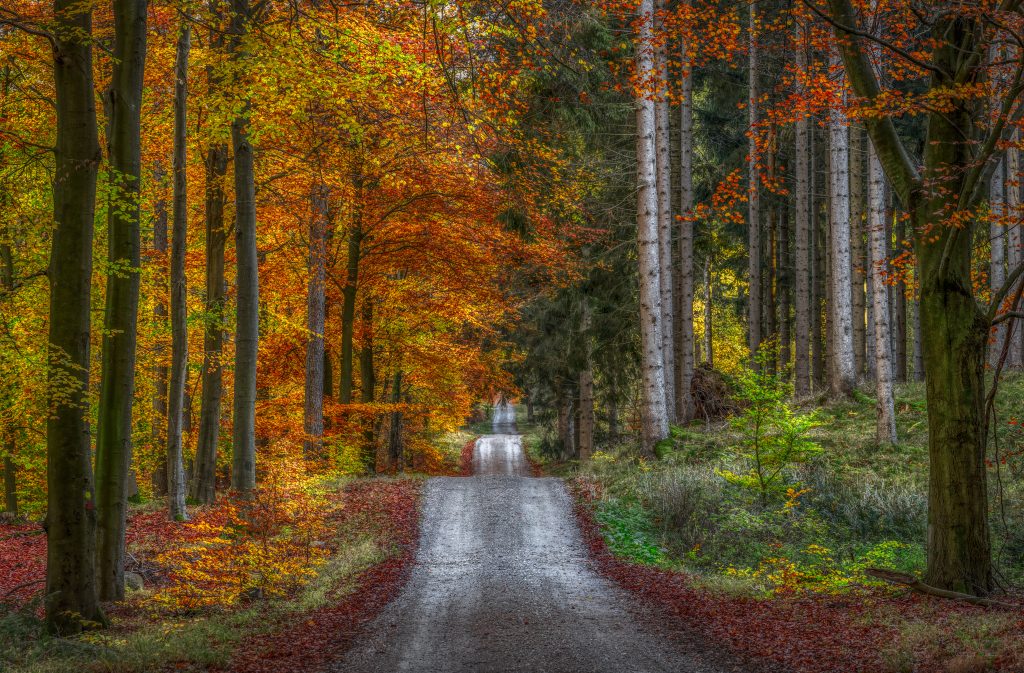
Another point I would like to make is that I actually want to question the so-called reality that many people seem to subscribe to. It seems to me that some people think that an unedited photo, per definition, is closer to reality than one that has been edited. The truth is that one is the camera's interpretation of reality and the other is a human being's interpretation of reality. Do you really think that the camera's interpretation is always more accurate than the human being's who took the picture? Maybe neither one can be completely accurate, but in that case, I will usually find the human being's interpretation more interesting. Of course, a human being can completely ruin a picture with too heavy-handed editing, and I'm sure I have been guilty of that too in the past. Some would say I still am, but I choose to believe that, as I have become more and more conscious of what I want to achieve, it doesn't happen quite as often.
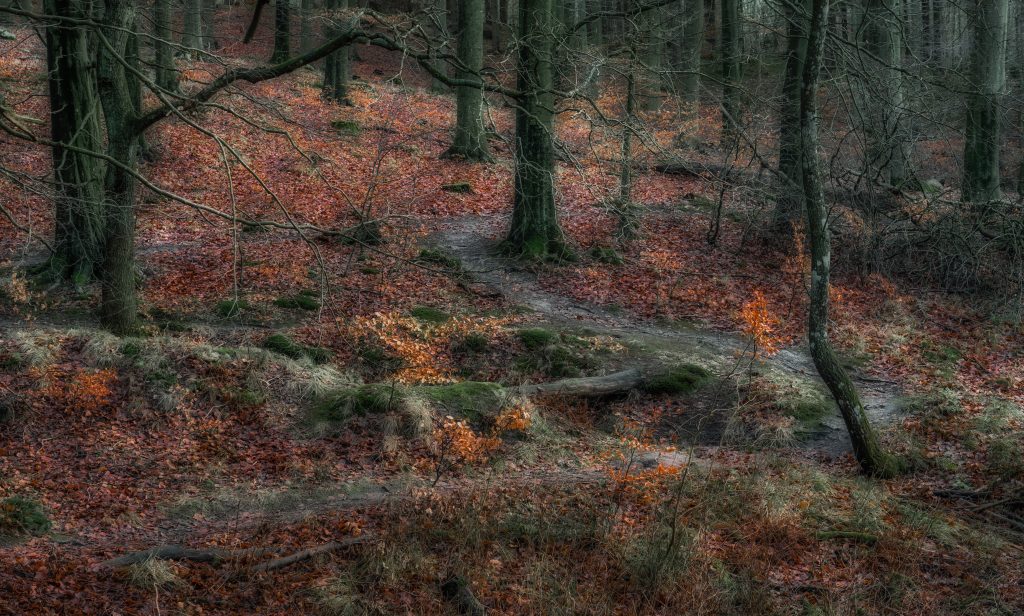
When all is said and done, I can't rule out that I'm just not very good at conveying what I want to convey with my images and that the "but-it-doesn't-look-like-reality"-segment of the population is right. Or that, realistic or not, the same people would totally get the image if I was just better at editing. But I also have received enough awards and love on places like Viewbug and GuruShots that I feel fairly confident that I'm not completely hopeless at what I'm doing.
In the end, I do with my images what I feel is right and what brings up the same feelings in me that I had in the situation. Whether it brings up any - or the right - feelings in anyone else is another matter. All I can do is try and hope that what I do strikes a chord with you.
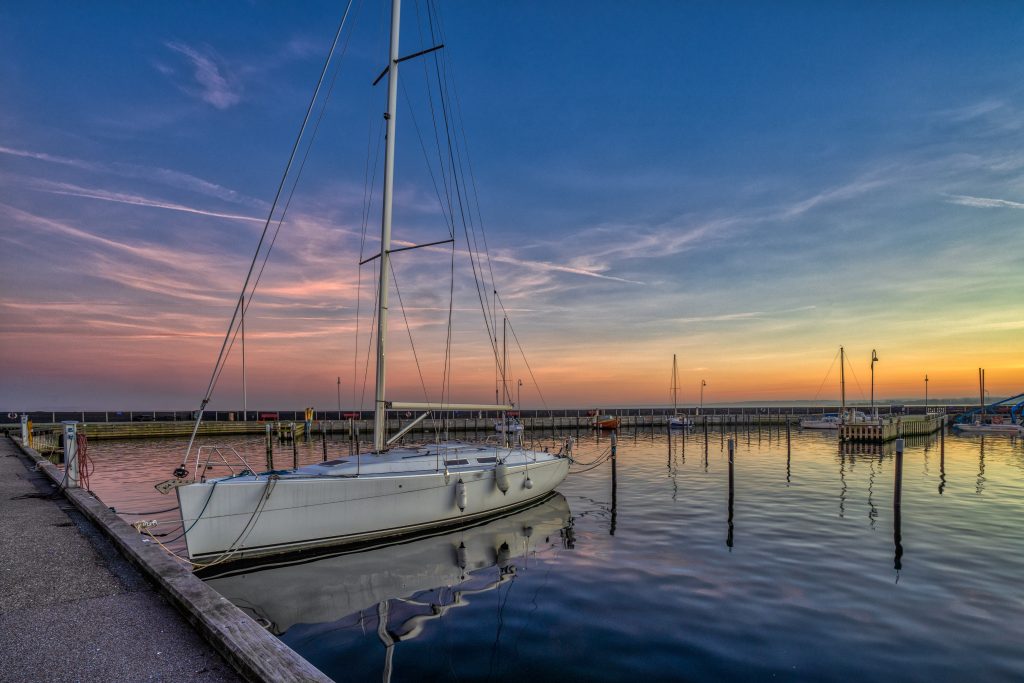
Every time I upgrade my camera equipment or achieve some new insight into photography, I joke to my wife that now I have to go back to every interesting place we've ever been and re-shoot all my photos.
Well, last month I got the chance to go back to a place we have been to several times before, but which I never quite conquered photography-wise: Oslo, Norway. Each time we had been there in the past, we'd taken the Copenhagen-Oslo ferry, which is a 16-hour voyage advertised as a mini-cruise. This time was no exception. I love this form of traveling. You can walk around the ship, eat great food, watch the ocean, chill in your cabin, and just relax, knowing that you are completely off the grid out there in the middle of the ocean. When you arrive in Oslo, you have 6-7 hours to explore the city before going back on the ship for the return voyage.
Now, the purpose of this trip was relaxing, first and foremost - not taking pictures. But of course, there's nothing wrong with bringing your camera just in case some good opportunities should arise. And they did... Of course they did. In fact, we hadn't even left the harbor in Copenhagen before I started snapping away from the stern of the ship and captured some of the surrounding architecture.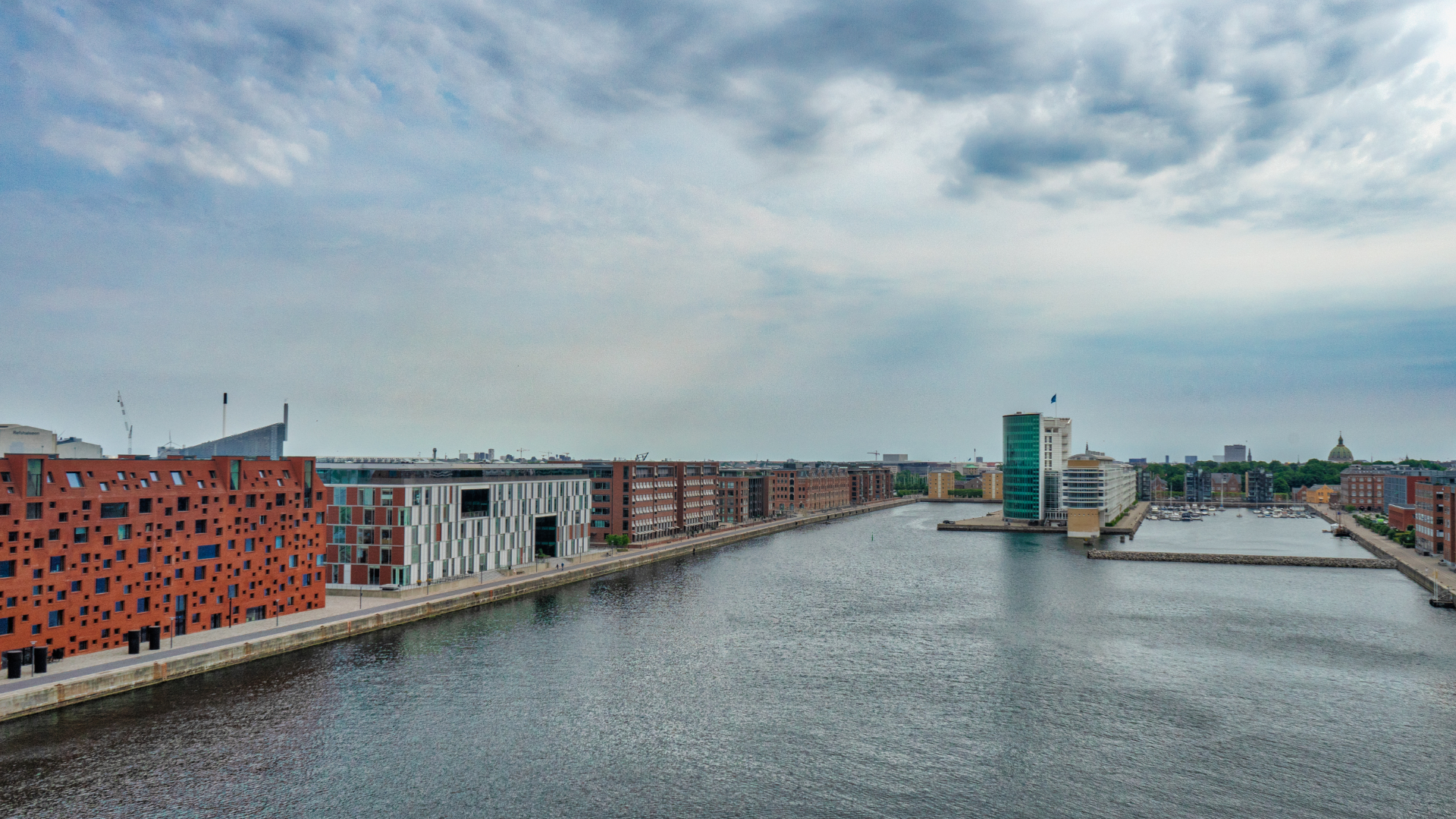 As the ship made its way out of Copenhagen, we passed a few points of interest. First, an old, wooden ship returns to a more modern world.
As the ship made its way out of Copenhagen, we passed a few points of interest. First, an old, wooden ship returns to a more modern world.
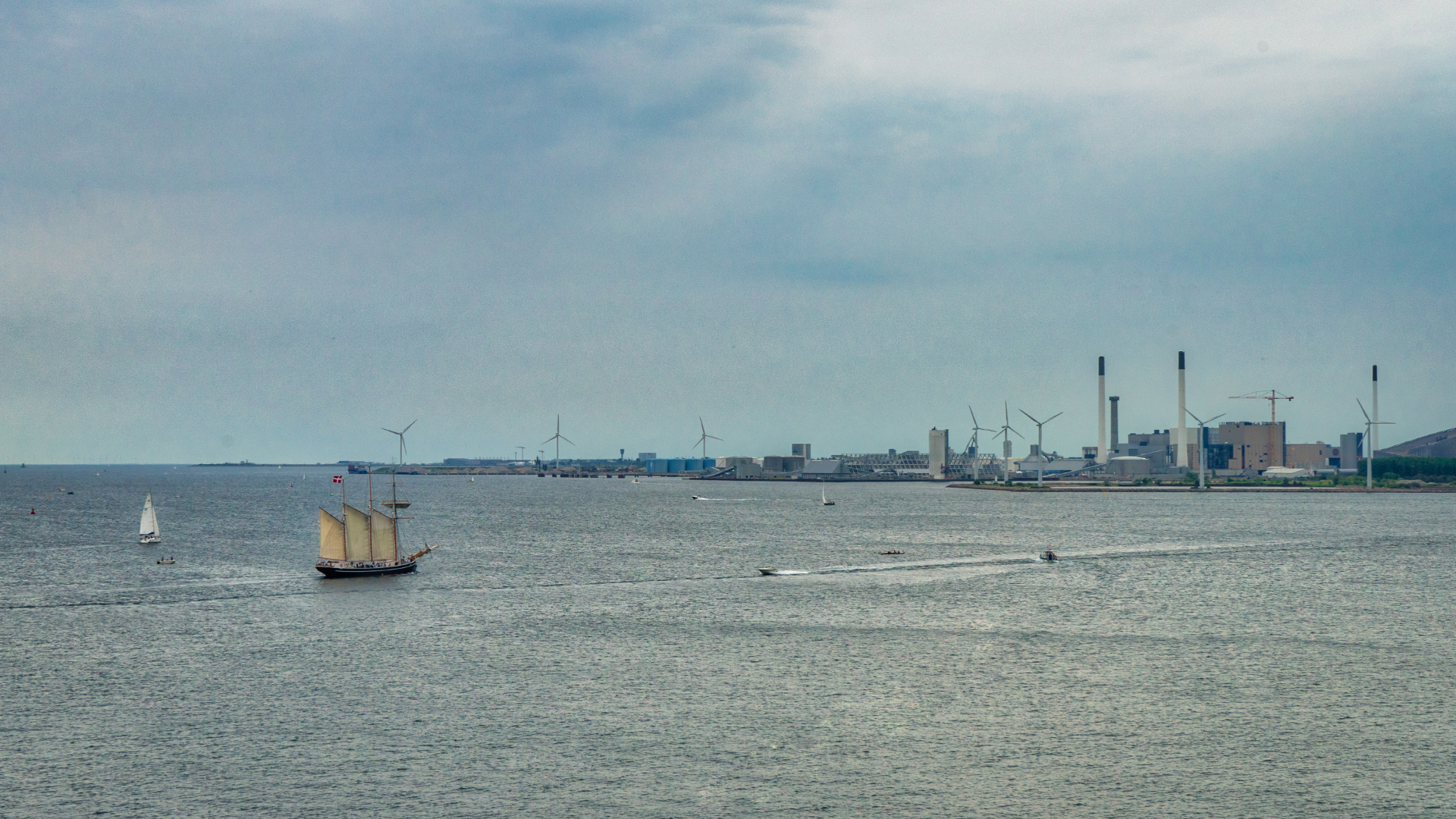 Then, with no time to change to a longer lens, the below image of a long string of wind turbines in the distance would have to do. But I kind of like the minimalism of it and the clouds. Sometimes you have to make the best of what you've got.
Then, with no time to change to a longer lens, the below image of a long string of wind turbines in the distance would have to do. But I kind of like the minimalism of it and the clouds. Sometimes you have to make the best of what you've got.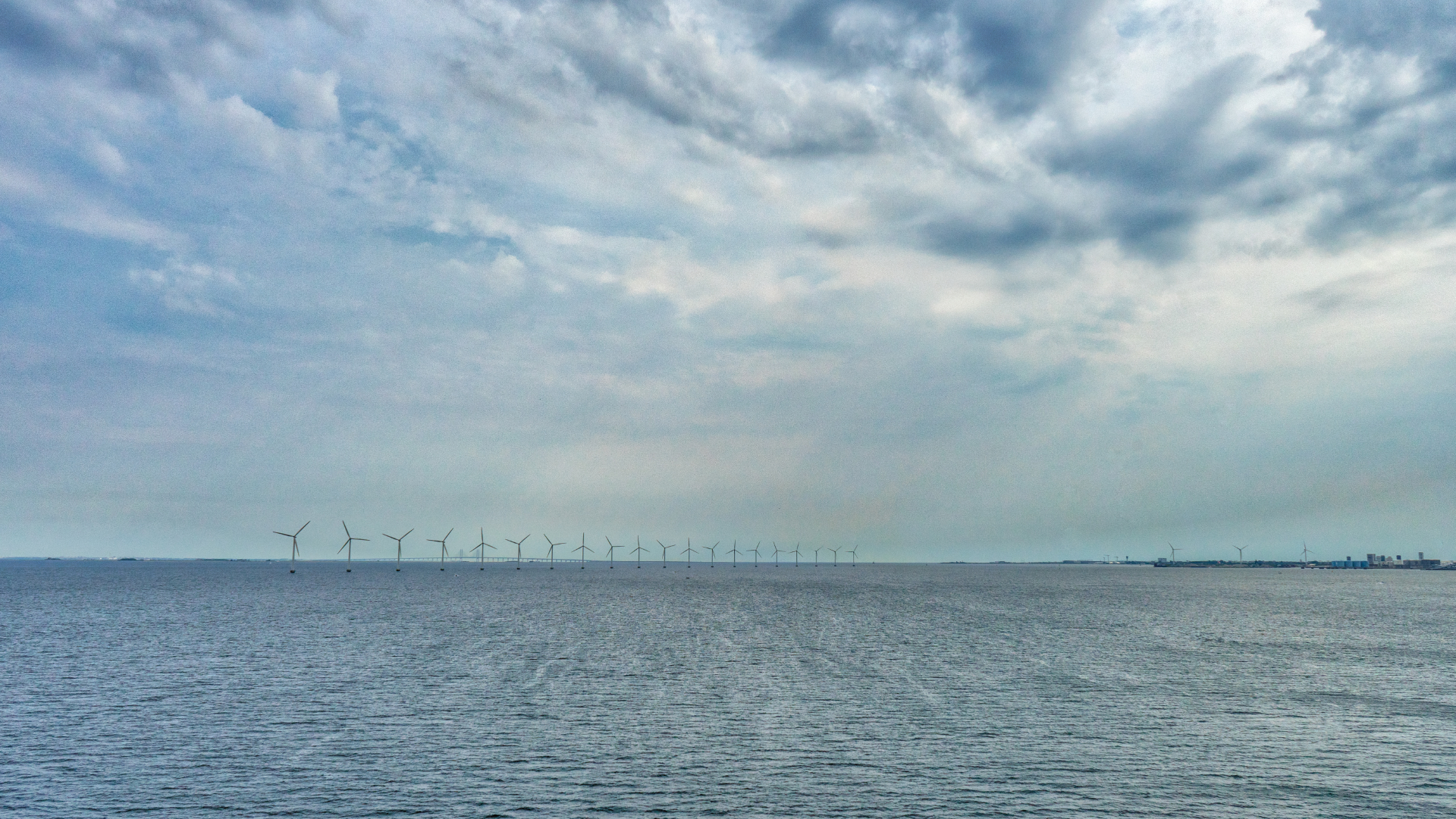 Several hours later, after emptying the famous restaurant Seven Seas all-you-can-eat buffet, we went back on deck to get some air and look around.
Several hours later, after emptying the famous restaurant Seven Seas all-you-can-eat buffet, we went back on deck to get some air and look around.
With gray clouds having covered the sky most of the day, I didn't have much hope for a sunset, but I got something that seemed at least as spectacular, and something you might only experience at sea: a narrow orange strip of sunlight lined the horizon and served as the backdrop for a couple of far-off freighter vessels. Above the orange light, dramatic storm clouds loomed low. It was an incredible sight. Again, I might have benefited from a longer lens than my 24-70 mm, but the sense of scale may have suffered as a result. Showing how small the ship is in the hands of nature is one of the picture's strengths, in my own opinion.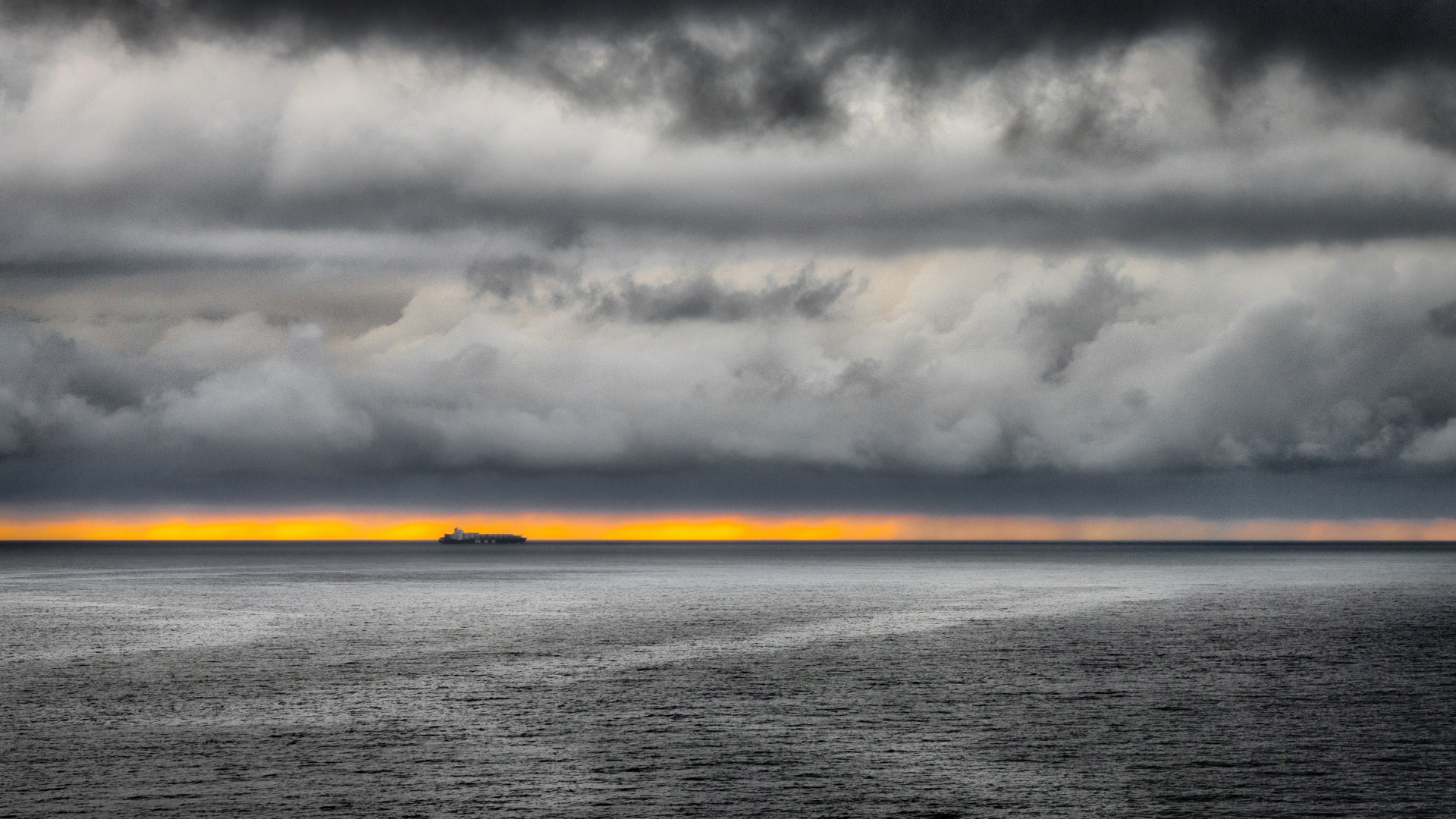 The next morning it was time for one of the scenes that I had been looking forward to revisiting: the approach to Oslo through the narrow parts of Oslo Fjord. Here you pass by small idyllic islands and hills dotted with colorful Norwegian villages.
The next morning it was time for one of the scenes that I had been looking forward to revisiting: the approach to Oslo through the narrow parts of Oslo Fjord. Here you pass by small idyllic islands and hills dotted with colorful Norwegian villages.
Unfortunately, while the clouds had scattered somewhat, the sun was already so high in the sky, the light had turned harsh and difficult. I was still using my 24-70 mm kit lens since my much sharper 16-24 mm requires more of a foreground than you will find shooting these landscapes from a ship. I took numerous pictures, of course, but very few of them turned out well. Here's an exception, although it's still not quite what I had hoped for.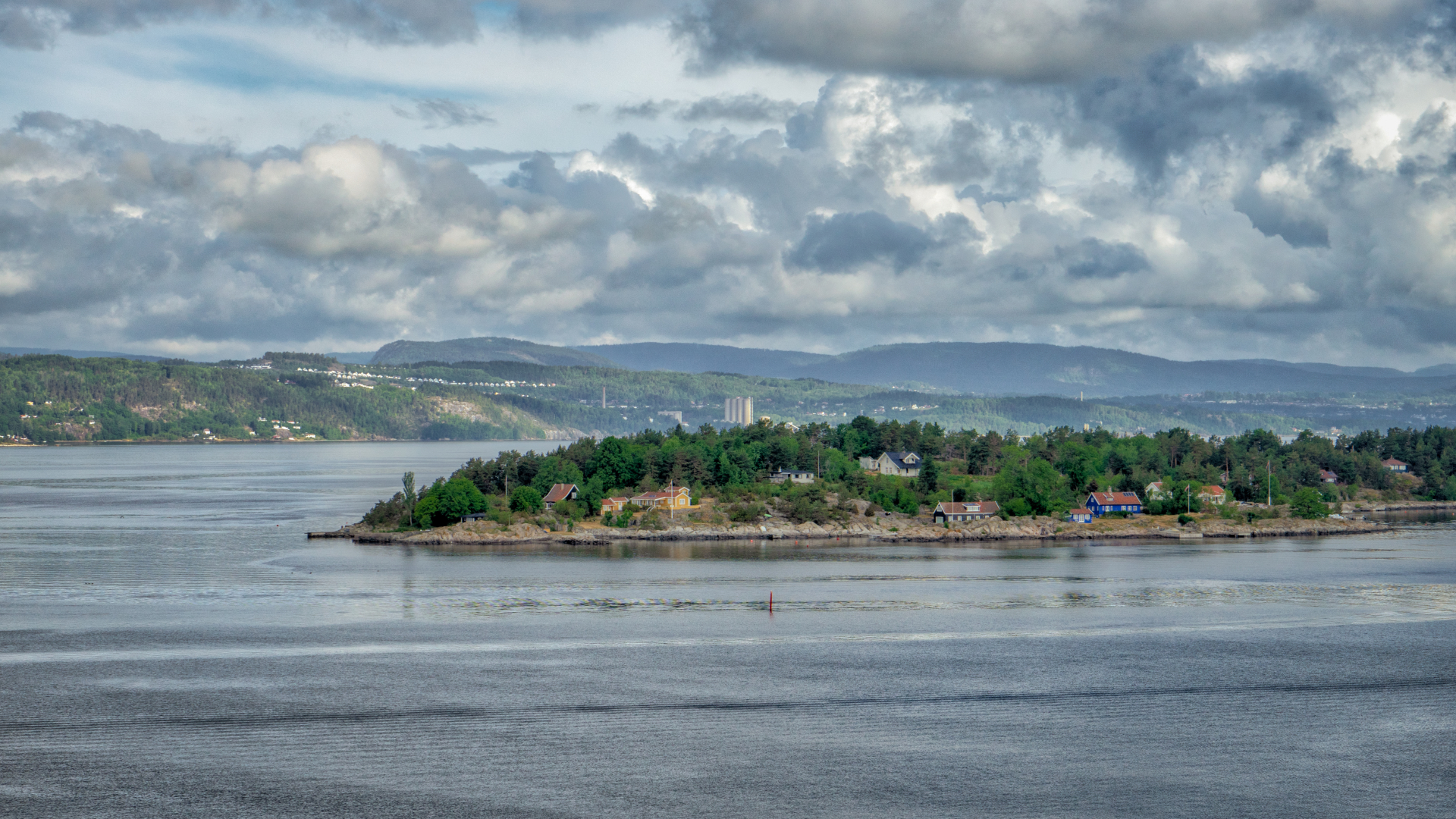 After arriving in Oslo we caught a hop-on-hop-off bus in order to get off at the Vigeland Sculpture Park a little ways out of downtown Oslo. Despite having been in the city several times, we'd always skipped it even though every guide book describes it as a must-see attraction in Oslo.
After arriving in Oslo we caught a hop-on-hop-off bus in order to get off at the Vigeland Sculpture Park a little ways out of downtown Oslo. Despite having been in the city several times, we'd always skipped it even though every guide book describes it as a must-see attraction in Oslo.
Well, it turned out the guide books were right. The Vigeland Sculpture Park is definitely worth seeing, even for someone like us who don't get terribly excited when we hear the word "sculpture". First of all, it's huge! You can easily spend half a day there. Secondly, the sculptures are... different. You won't see any statues of kings and generals on horses. Whoever this Vigeland was who created all the sculptures, he had a pretty unusual mind. Some would say pretty sick.
Anyway, from a photography standpoint there were lots of tempting motifs. Plenty of sculptures would have made for interesting subjects. However, to me, just taking a picture of someone else's piece of art is not very appealing. As a photographer you need to add to the experience and create something new by including the surroundings and the atmosphere at that particular moment. And that's exactly what I think I did with my personal favorite image from the park below. It's also one of my rare vertical images.
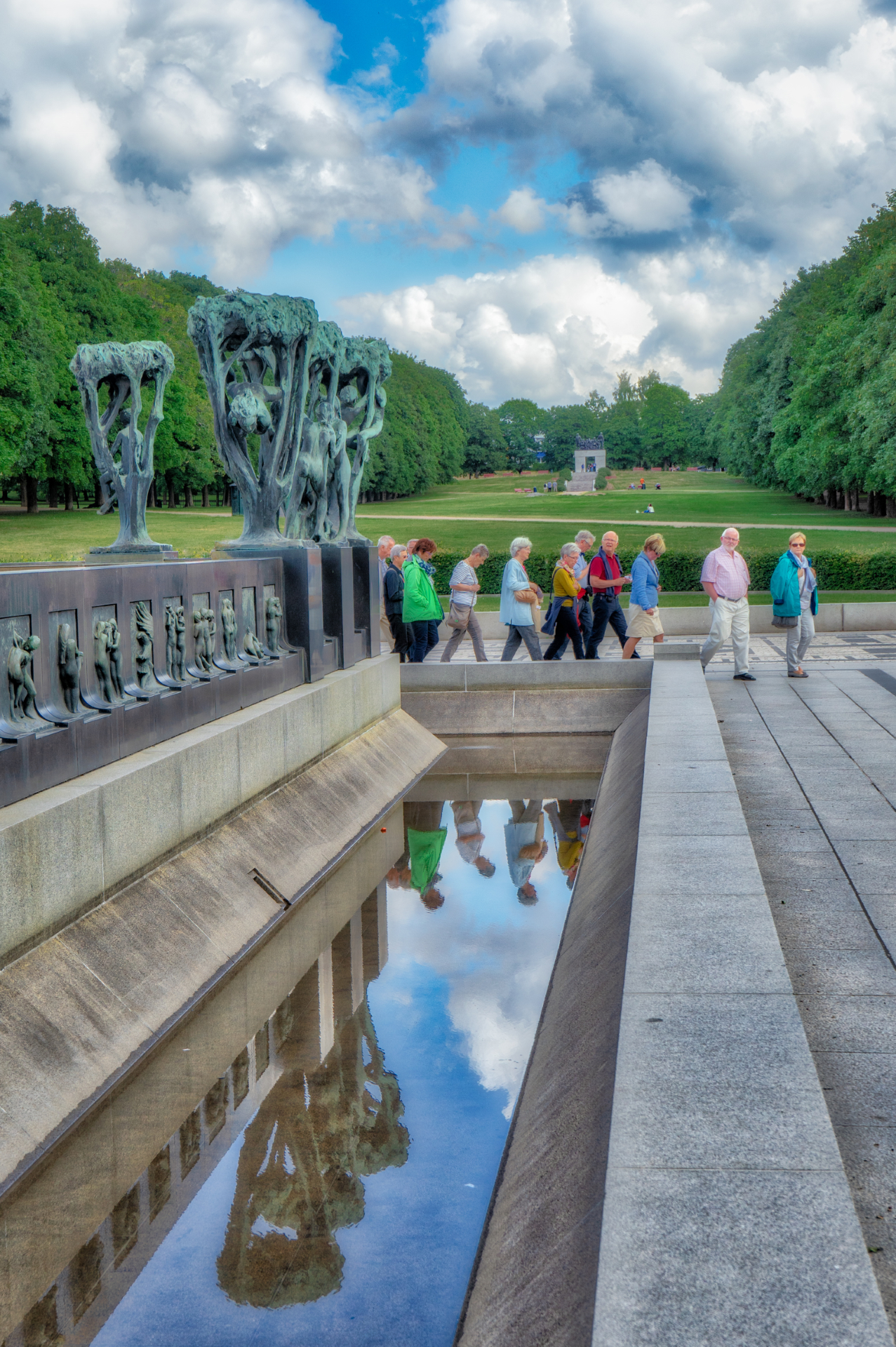 The next image is of a waterfall/fountain in the middle of the park. I didn't bring my tripod - only a monopod - so I couldn't make a true long exposure, which seems to be the agreed-on standard for waterfall photography. Personally, I think a faster shutter speed can be quite impressive too.
The next image is of a waterfall/fountain in the middle of the park. I didn't bring my tripod - only a monopod - so I couldn't make a true long exposure, which seems to be the agreed-on standard for waterfall photography. Personally, I think a faster shutter speed can be quite impressive too.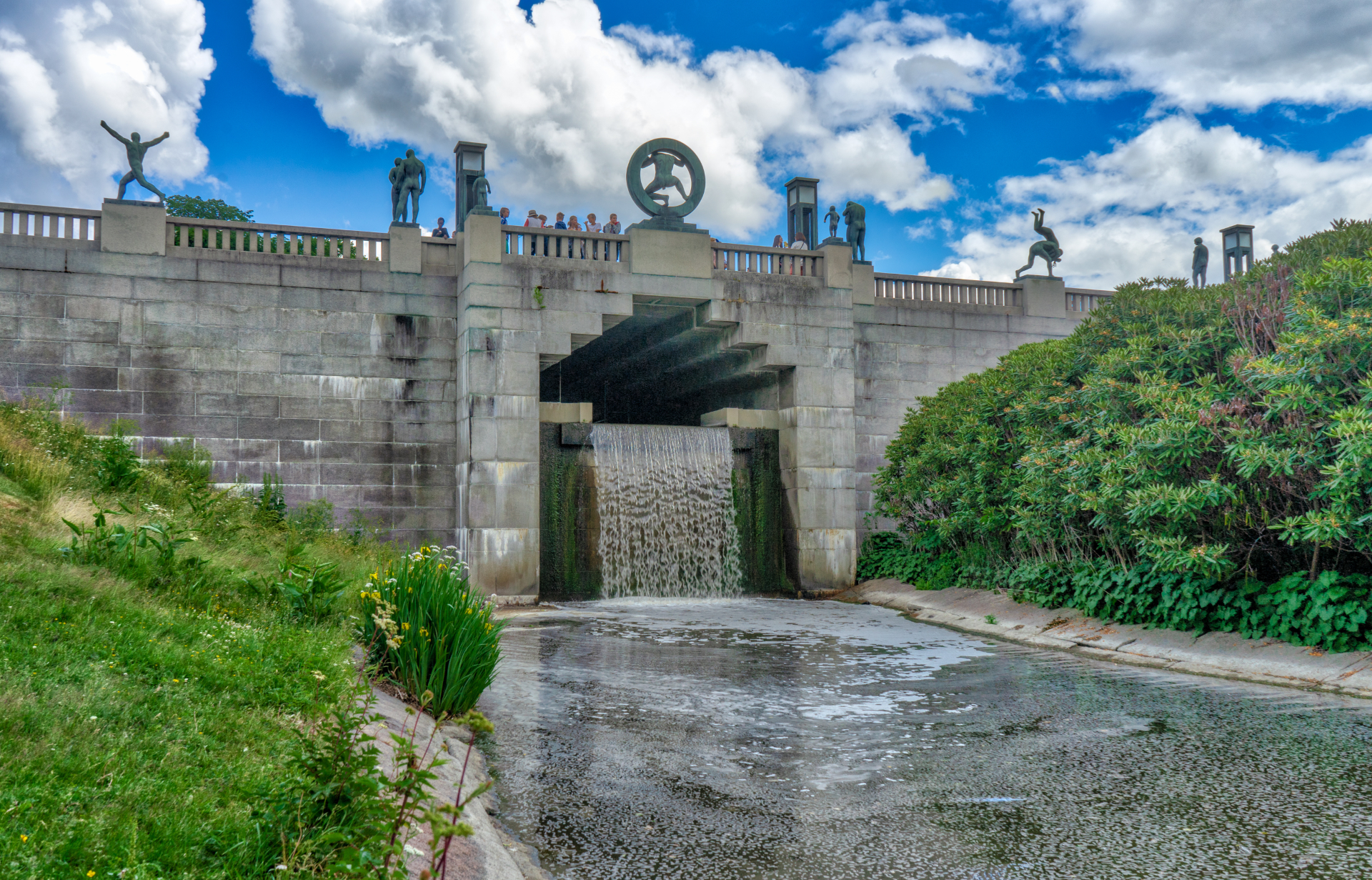 The last image from the park shows no sculptures (except for the tiny ones separating the benches), but there is plenty of beautiful landscaping going on too. This scene was just too beautiful and harmonic to ignore.
The last image from the park shows no sculptures (except for the tiny ones separating the benches), but there is plenty of beautiful landscaping going on too. This scene was just too beautiful and harmonic to ignore.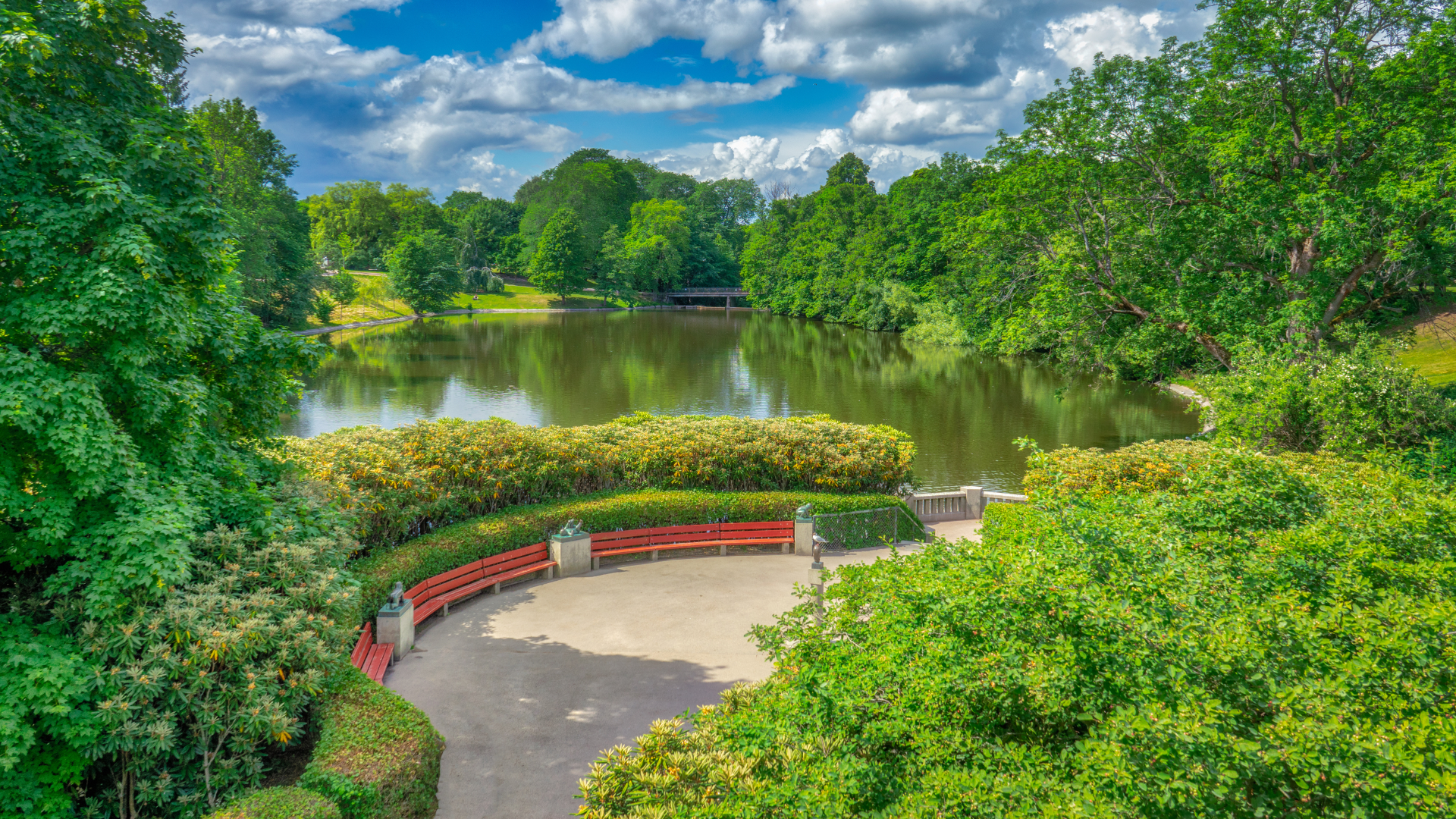 Next stop on our Oslo journey was the viking ship museum, which, like the Vigeland Park, was a first for us. Photography is always difficult inside a dim museum, but I got a few fairly good shots of the ships, including this one.
Next stop on our Oslo journey was the viking ship museum, which, like the Vigeland Park, was a first for us. Photography is always difficult inside a dim museum, but I got a few fairly good shots of the ships, including this one.
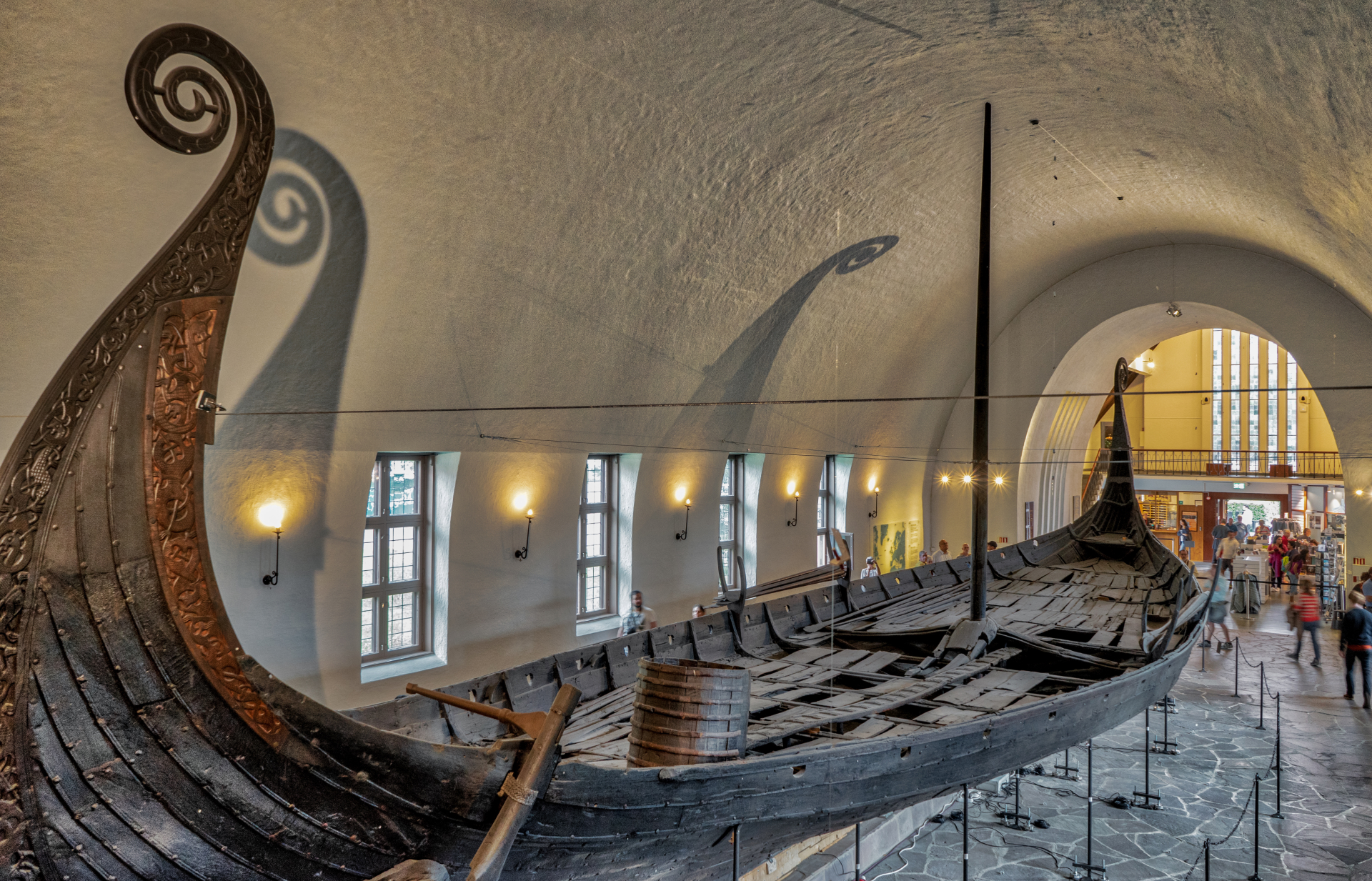 When we returned to downtown Oslo, it had started to rain so there wasn't going to be much photography happening. I did capture this image of the waterfront area as the rain moved on. By then it was time to go back to the ship, so except for a few more insignificant images from the walk back, that pretty much concluded the Oslo part of our journey.
When we returned to downtown Oslo, it had started to rain so there wasn't going to be much photography happening. I did capture this image of the waterfront area as the rain moved on. By then it was time to go back to the ship, so except for a few more insignificant images from the walk back, that pretty much concluded the Oslo part of our journey.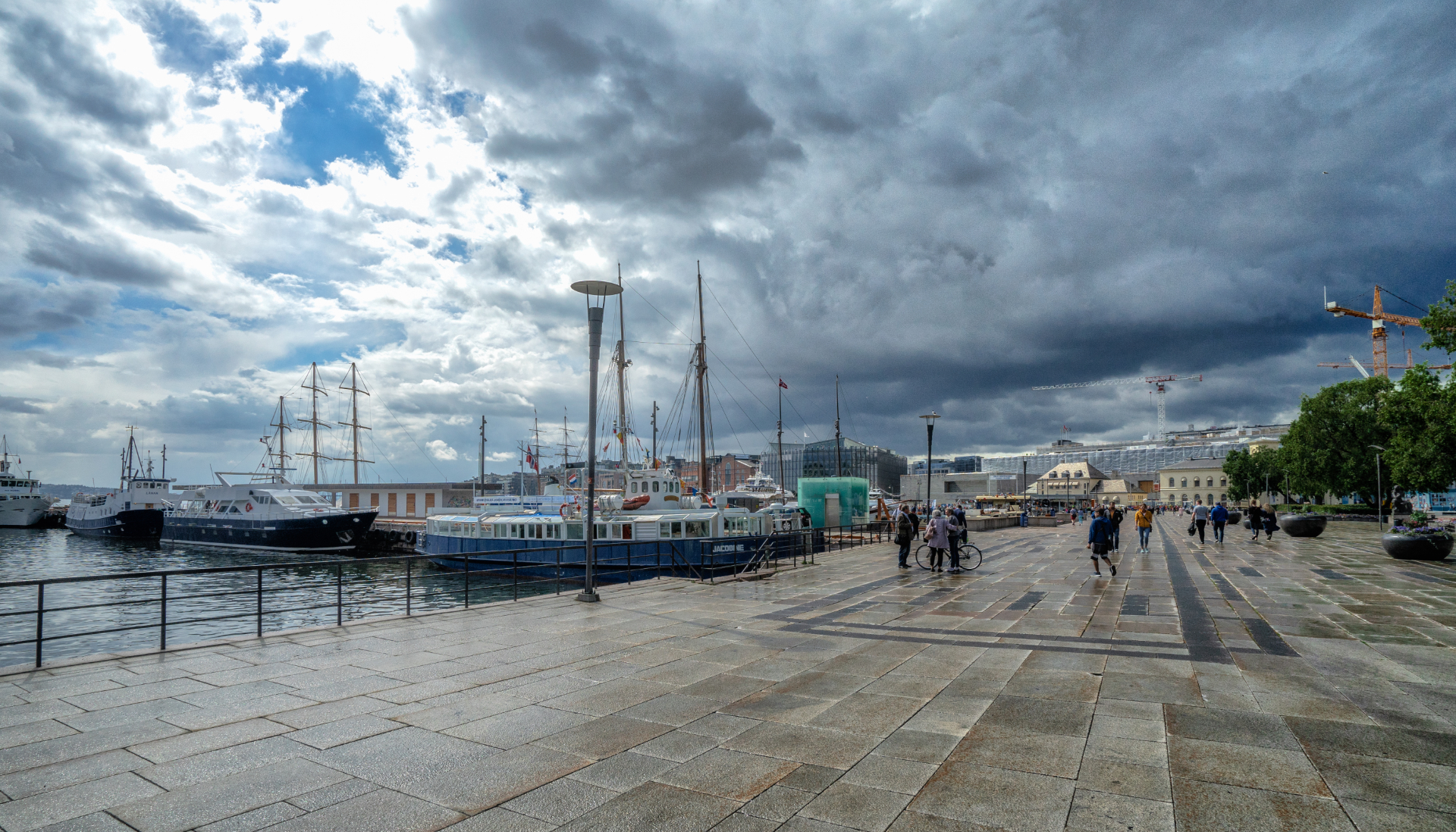 The ship, by the way, was this beauty. It looks impressive, but compared to real cruise ships, it's a dinghy. Still, it was plenty big for us and constituted a fine floating home for us during our voyage.
The ship, by the way, was this beauty. It looks impressive, but compared to real cruise ships, it's a dinghy. Still, it was plenty big for us and constituted a fine floating home for us during our voyage.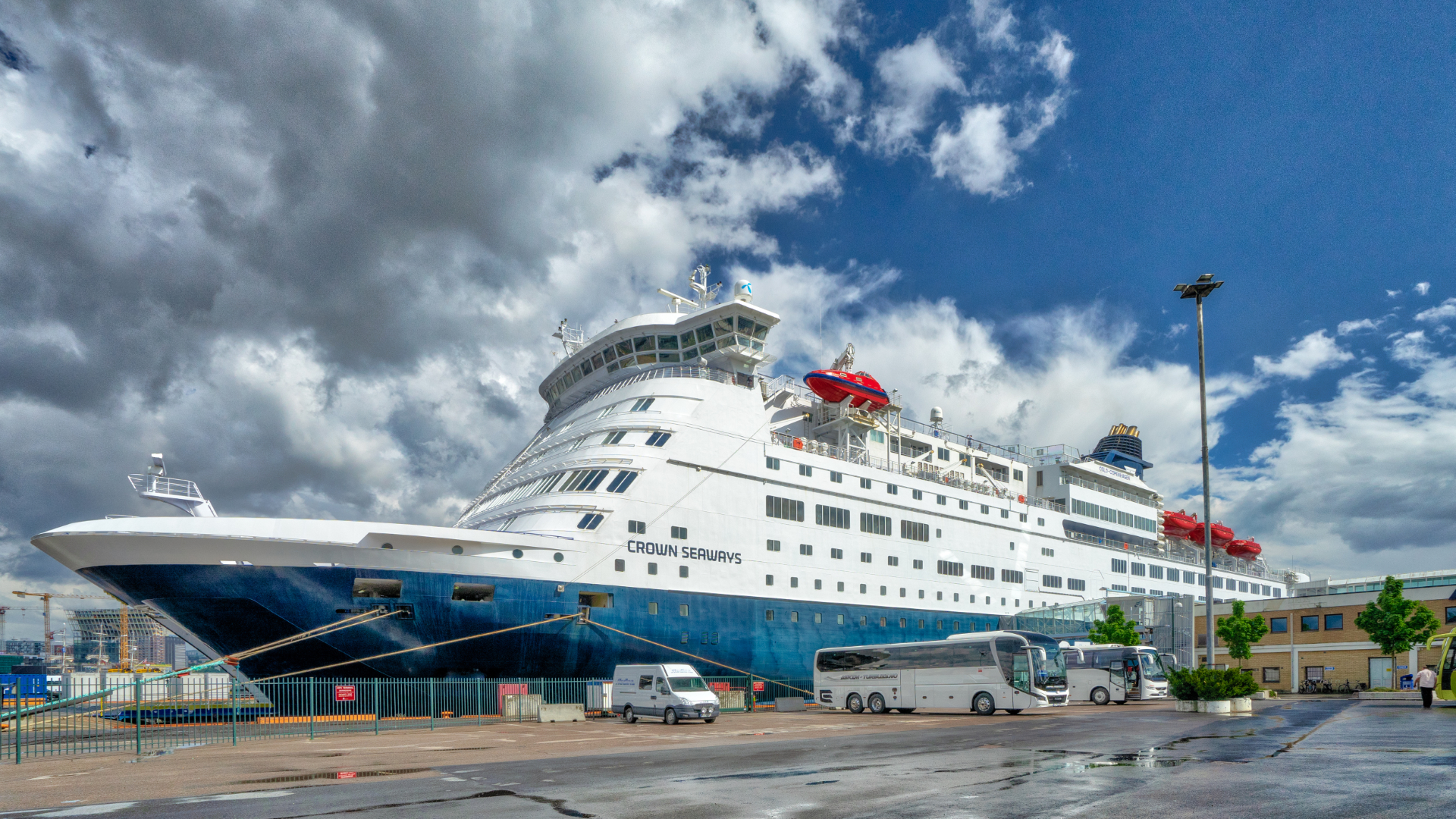 Exiting Oslo through the fjord presented a new opportunity for some great fjord photography, but again, it wasn't really happening. The light was dull, and I was again struggling with the dilemma of whether to use my sharp Sony 16-24 mm lens, resulting in distant subjects, or my 24-70 mm kit lens that may bring the subjects more forward, but is just visibly inferior in image quality.
Exiting Oslo through the fjord presented a new opportunity for some great fjord photography, but again, it wasn't really happening. The light was dull, and I was again struggling with the dilemma of whether to use my sharp Sony 16-24 mm lens, resulting in distant subjects, or my 24-70 mm kit lens that may bring the subjects more forward, but is just visibly inferior in image quality.
In the below image I obviously used the former, and it works okay with the clouds and the little ferry and all, but again... better light, like a sunset, would have done wonders. So, note to self: next time we go on this Oslo trip, make it coincide it with early sunsets and late sunrises. Not that photography should be the main purpose of these trips... Perish the thought!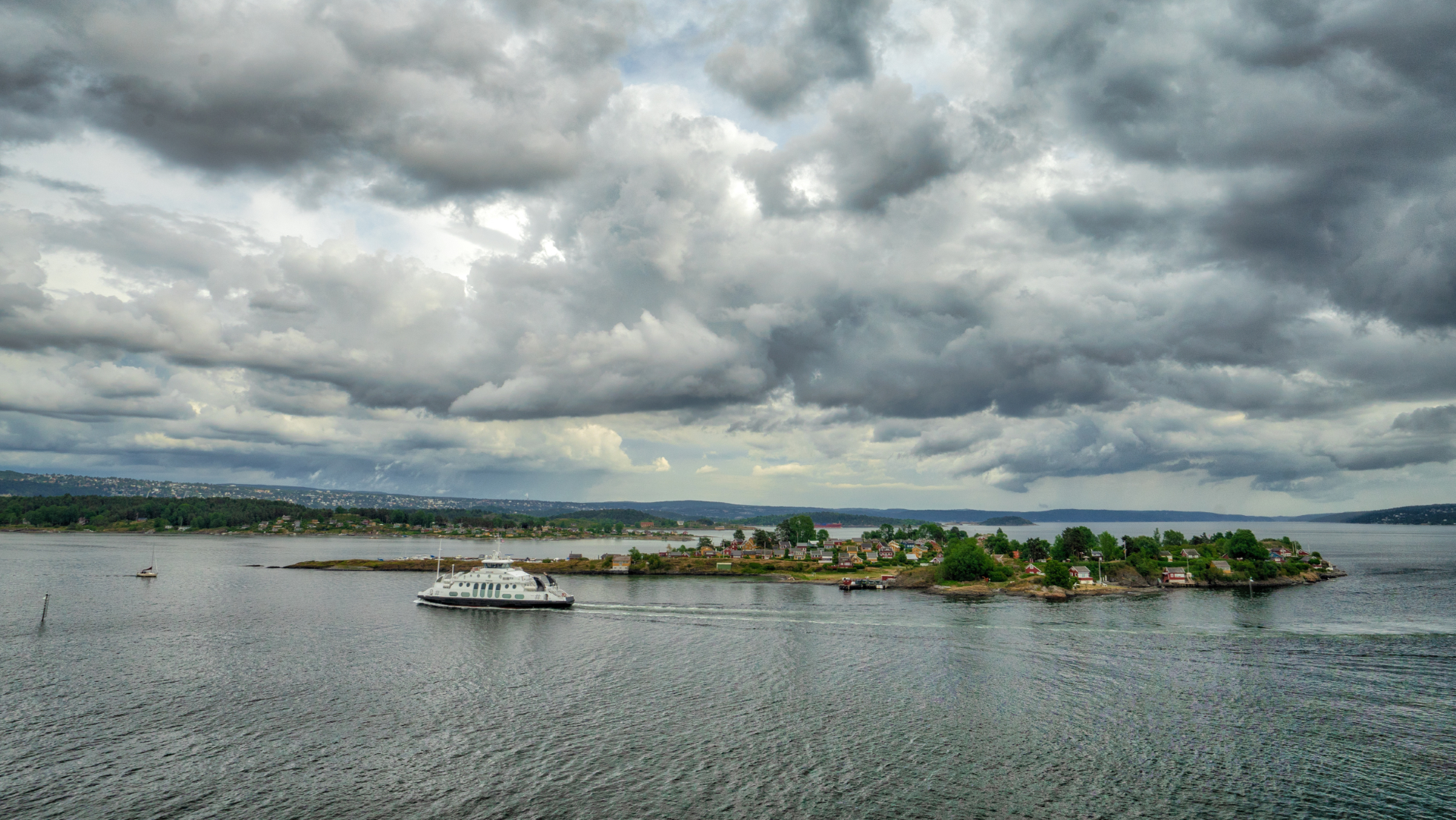 Later on, the restaurant where we were having dinner offered a great view of our trusty ship heading towards a storm. This is a picture taken with my cell phone as I didn't have my real camera on hand. Still, the result was one of my favorite shots of the day.
Later on, the restaurant where we were having dinner offered a great view of our trusty ship heading towards a storm. This is a picture taken with my cell phone as I didn't have my real camera on hand. Still, the result was one of my favorite shots of the day.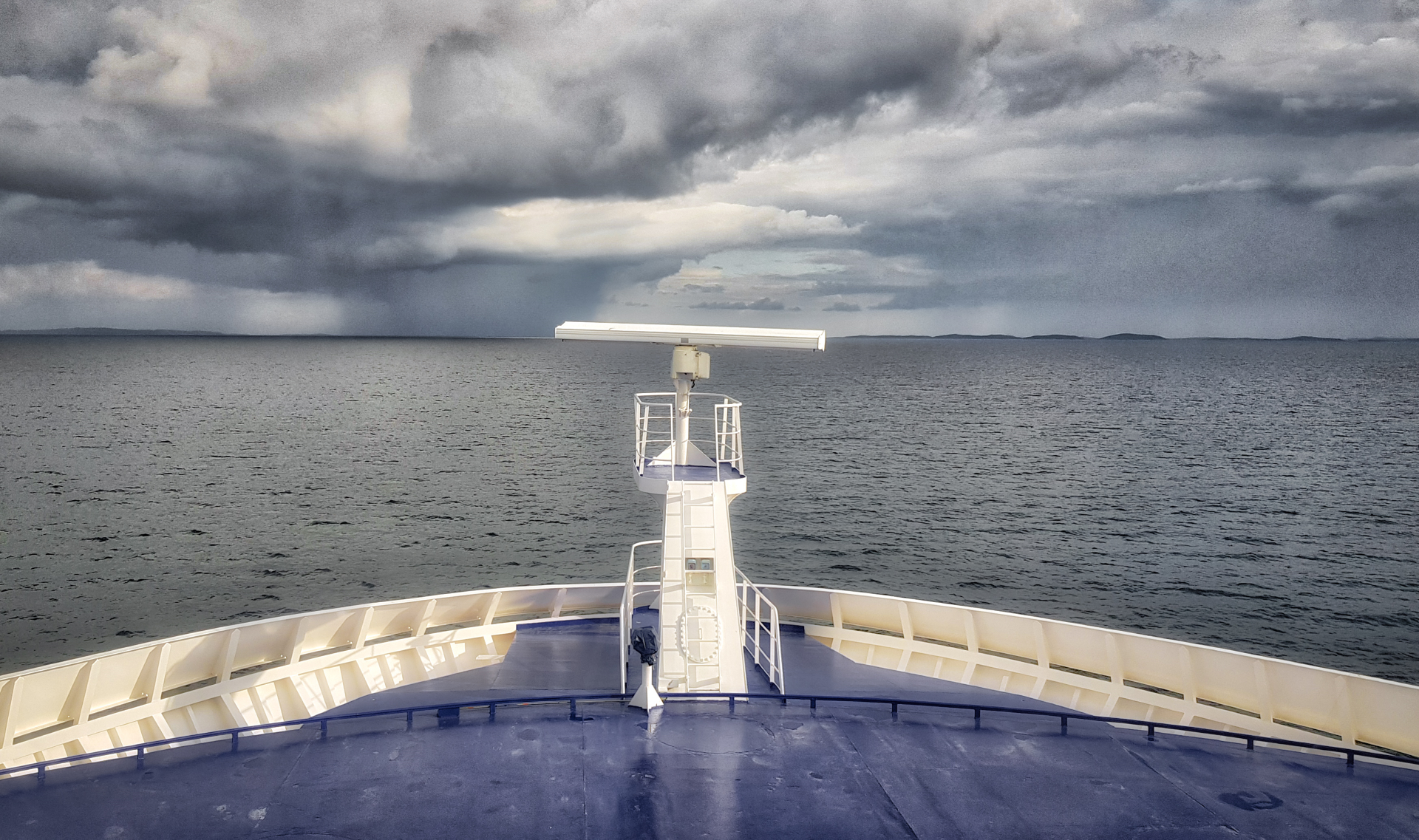 The above picture only marked the beginning of what was probably the photographic highlight of our two-day excursion. After dinner, like on the previous night, we went up on the deck to catch the sunset, and this time our faith was rewarded. I took numerous pictures as the sun disappeared below the horizon, but these two tell the story of a magical evening that put a perfect end to our trip.
The above picture only marked the beginning of what was probably the photographic highlight of our two-day excursion. After dinner, like on the previous night, we went up on the deck to catch the sunset, and this time our faith was rewarded. I took numerous pictures as the sun disappeared below the horizon, but these two tell the story of a magical evening that put a perfect end to our trip.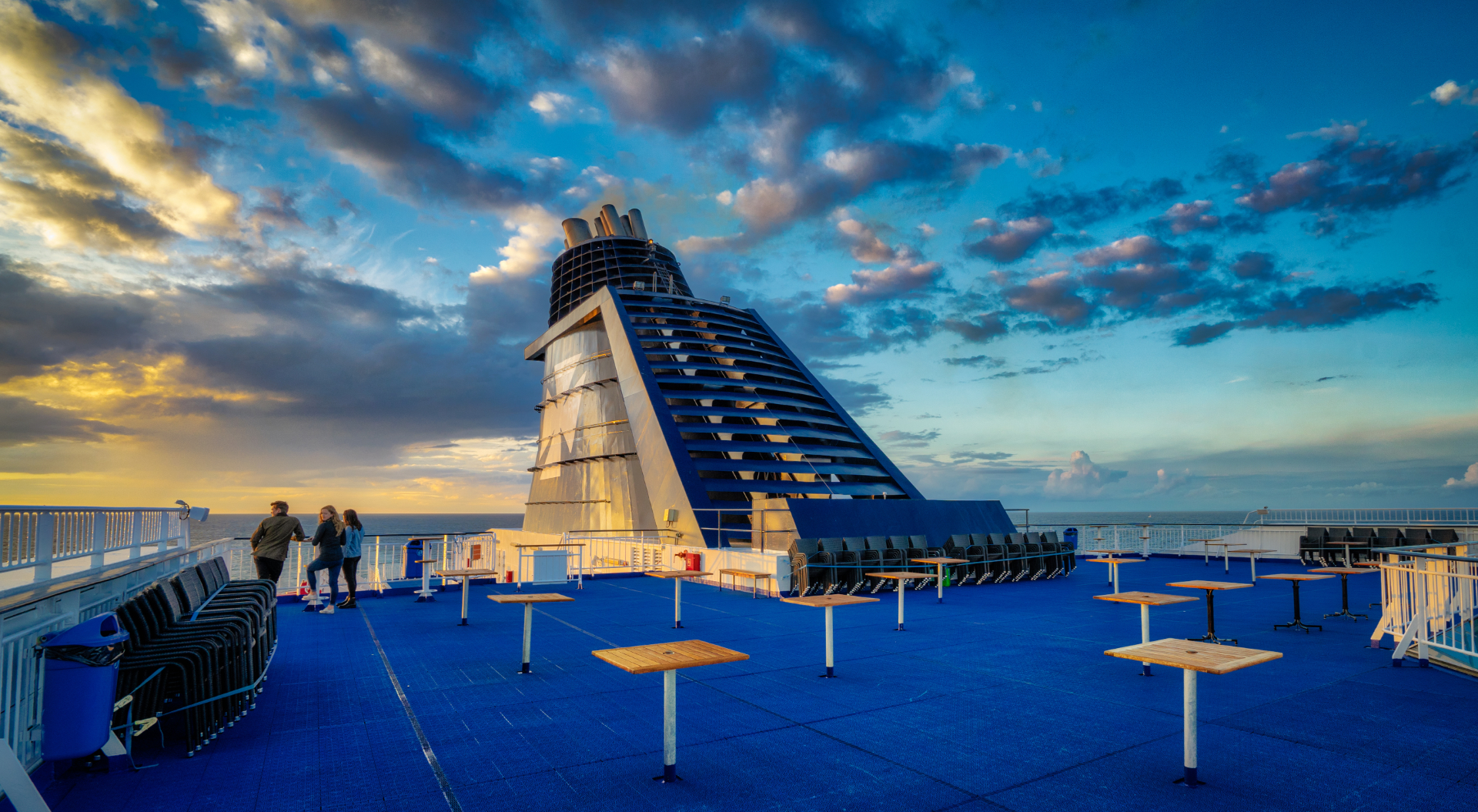
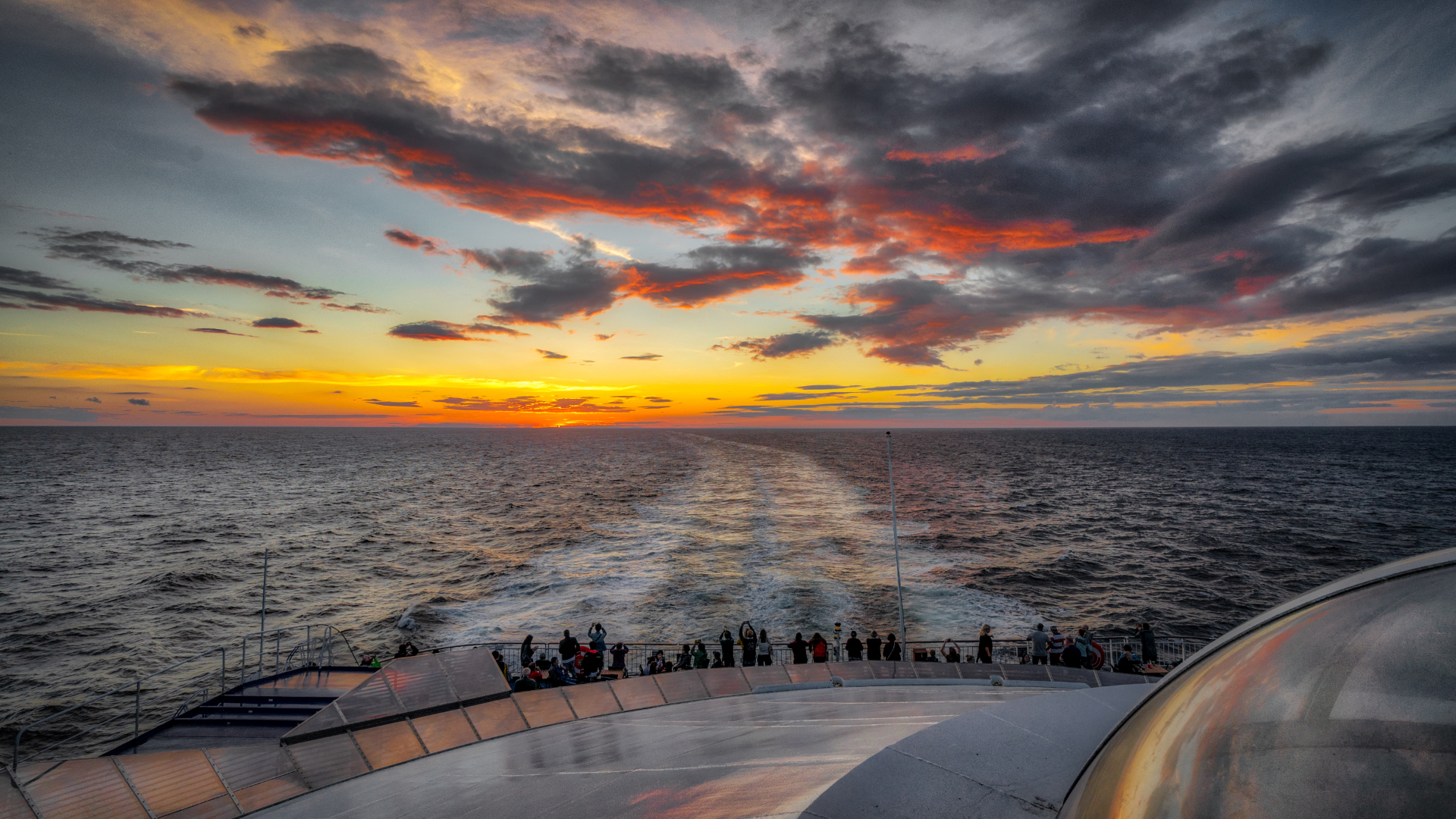 Actually, it wasn't quite the end. We still had one sleep left before arriving back in Copenhagen, and the next morning we, again, had a little time to go outside. Our intention was to have a look at Kronborg Castle as we sailed past, which we did, but it was too far away for me to get any interesting shots of it. Instead I caught the below image of the Helsingborg-Elsinore ferry tasting our wake.
Actually, it wasn't quite the end. We still had one sleep left before arriving back in Copenhagen, and the next morning we, again, had a little time to go outside. Our intention was to have a look at Kronborg Castle as we sailed past, which we did, but it was too far away for me to get any interesting shots of it. Instead I caught the below image of the Helsingborg-Elsinore ferry tasting our wake.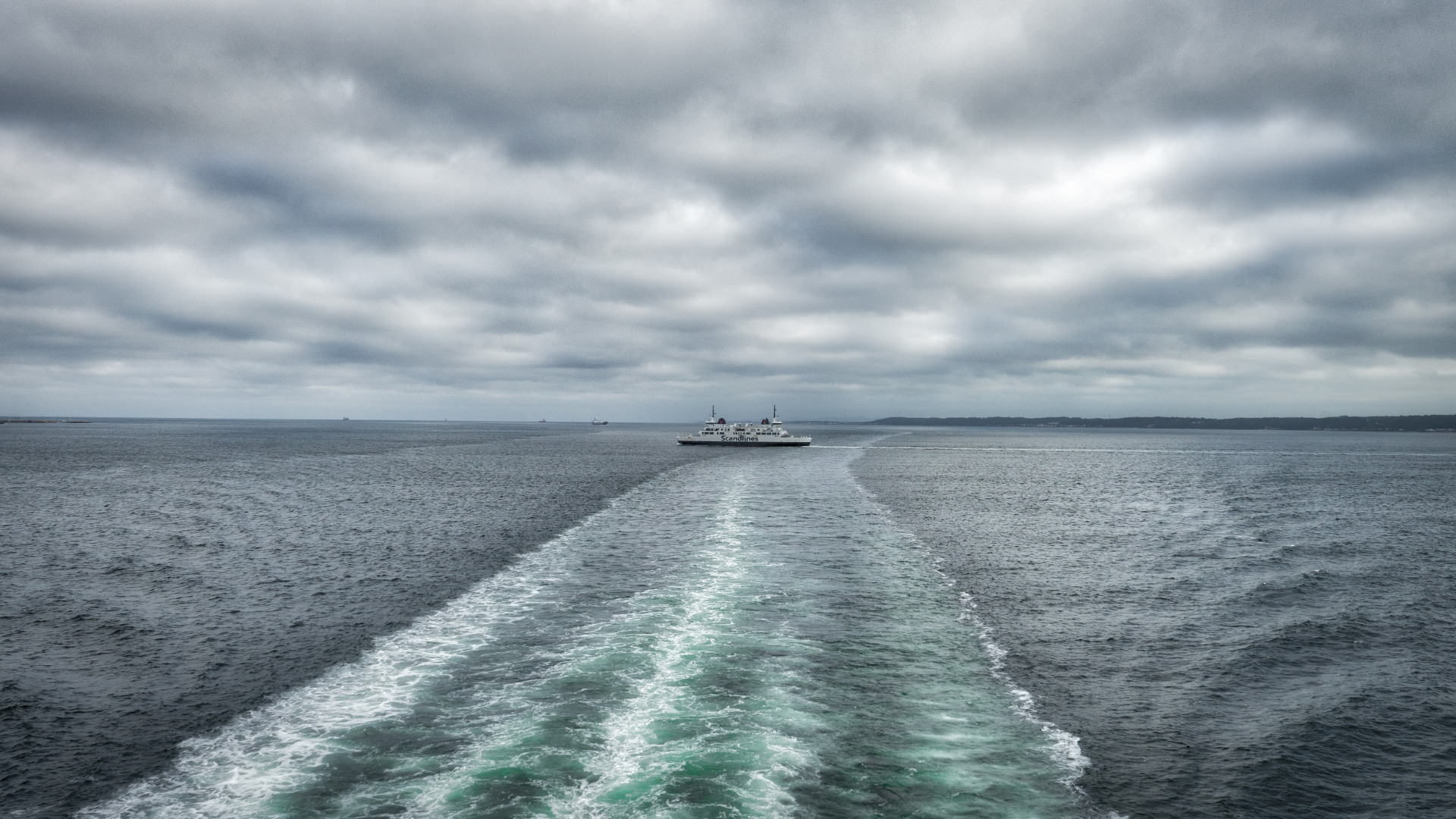 About an hour later we arrived in Copenhagen and departed the ship for the last time. We'd had a great time relaxing and being tourists. Photography-wise I still didn't quite get the ultimate pictures of the Oslo fjord, just as we didn't spend enough time in downtown Oslo to improve on my existing pictures of the city. Still, I was happy with seeing and photographing new locations in Oslo and getting some really nice ocean shots.
About an hour later we arrived in Copenhagen and departed the ship for the last time. We'd had a great time relaxing and being tourists. Photography-wise I still didn't quite get the ultimate pictures of the Oslo fjord, just as we didn't spend enough time in downtown Oslo to improve on my existing pictures of the city. Still, I was happy with seeing and photographing new locations in Oslo and getting some really nice ocean shots.
I'll be back!
Bruce Springsteen once said that as a young, unknown rock band you need to both think you are the greatest thing in music since the Beatles... and that you suck. The former gives you the confidence and attitude to maybe make others believe it too, and the latter makes you work harder at actually getting better.
This is not unlike how I feel as a photographer. In my own mind I am among the world's most underrated photo artists, but most external evidence tells me that I'm just another mediocre face in the ever growing mass of mediocre middle aged men with expensive cameras resting on their pot bellies.
When I look at my pictures from maybe just a year ago, I can see that the evidence was accurate: most of the pictures I thought back then were masterpieces, I now realize were nothing special and that the world's indifference to them was quite reasonable. On the other hand, the pictures I took today are mind blowing and will finally give me the recognition I deserve.
But then fear strikes me. What if in a year from now I can see that the pictures I now think are mind blowing are just as unremarkable as my old pictures? What if my pictures are not improving at all? What if the only thing that's improving is my state of denial?
As an amateur photographer, you don't have very many solid indicators to tell you if you're getting better. You can't measure it by sales since you're not selling. Friends and family may just tell you what you want to hear. And your own gut feeling and tastes prove worthless as images you wouldn't be caught dead having taken receive more votes/likes/awards than yours on GuruShots/Instagram/ViewBug.
Whatever the case, as of right now, in the confines of my own deluded, self-absorbed brain, I believe that the last couple of months have produced some of my best images ever. I have not written about it due to being busy tired, but November and December have been very productive in both quantity and quality with several photo outings, each of which brought forth sure additions to my portfolio should I one day get around to updating it.
Since I may still write more extensively about those outings, I will only post a few of the best shots here. The first two images are from the same day in November, a day that was split in two with the first half spent at the beautiful Bøllemose area with a low sun creating magical light between the trees, and the second half on the coast, including a blue hour to die for at a nearby marina. 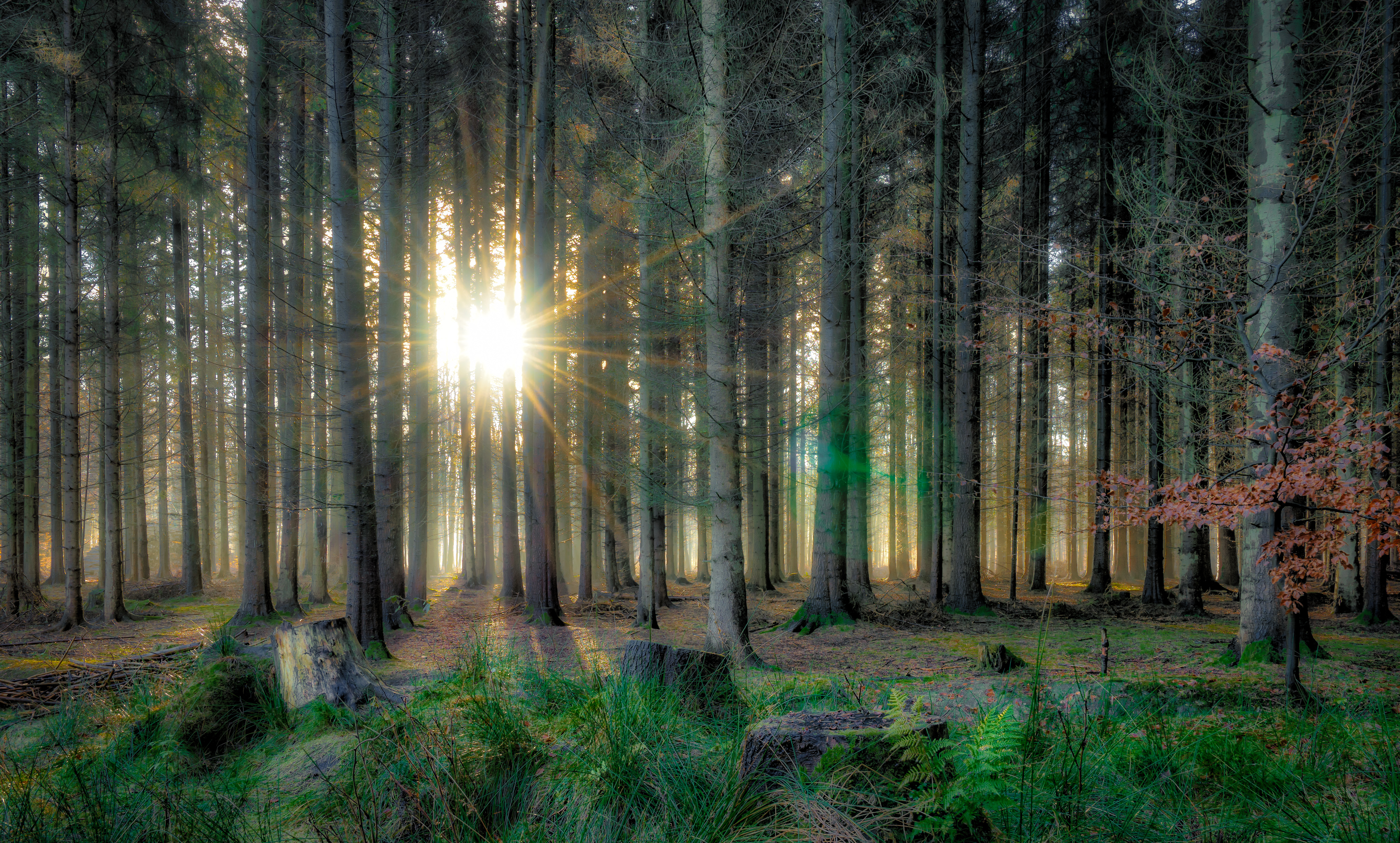
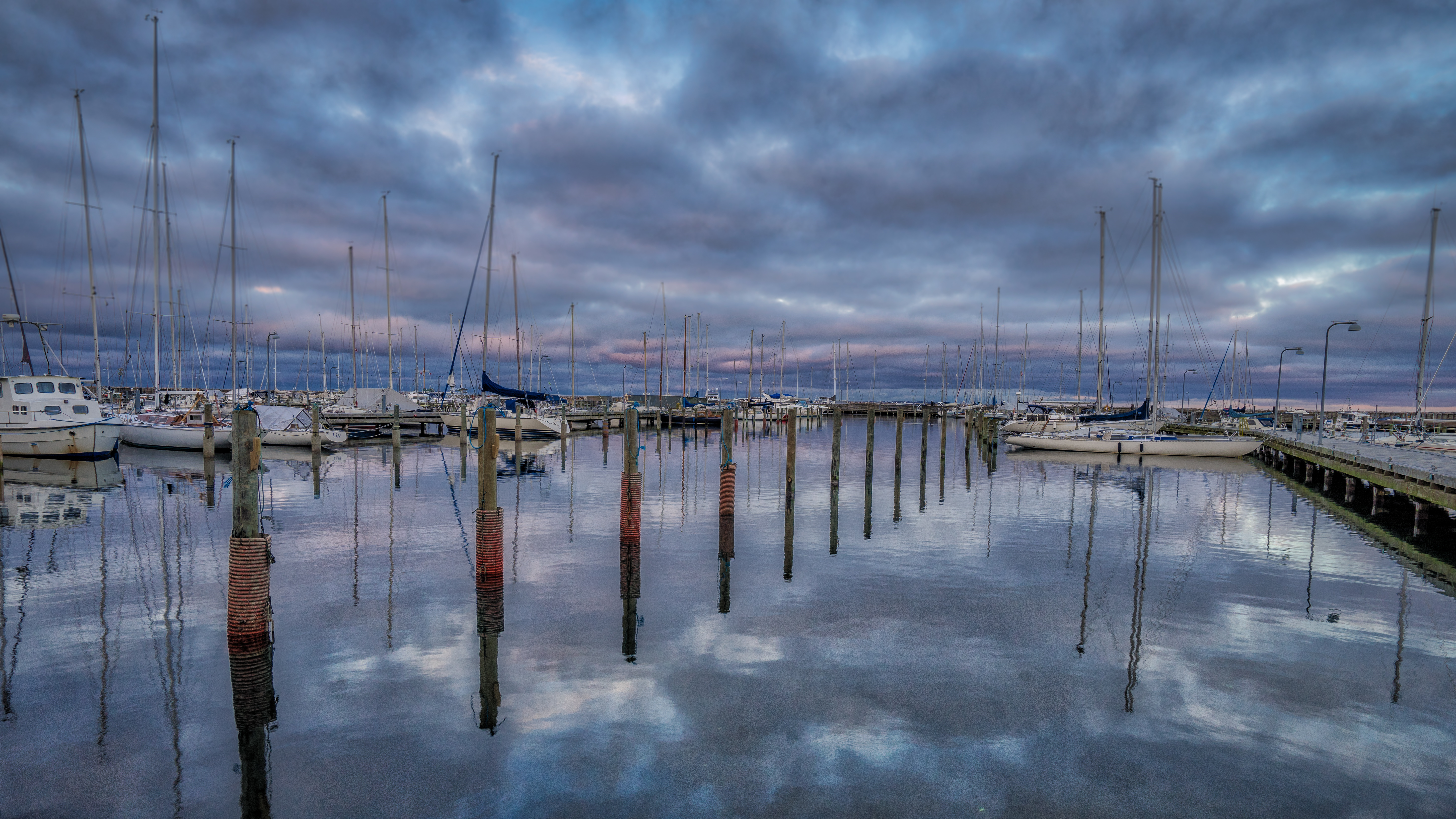 The next image is from my local area where, one Sunday afternoon, I spent the hours around the early Scandinavian sunset on a rugged, muddy field, almost ruining my boots, but capturing some pictures that I was really happy with., including this one.
The next image is from my local area where, one Sunday afternoon, I spent the hours around the early Scandinavian sunset on a rugged, muddy field, almost ruining my boots, but capturing some pictures that I was really happy with., including this one.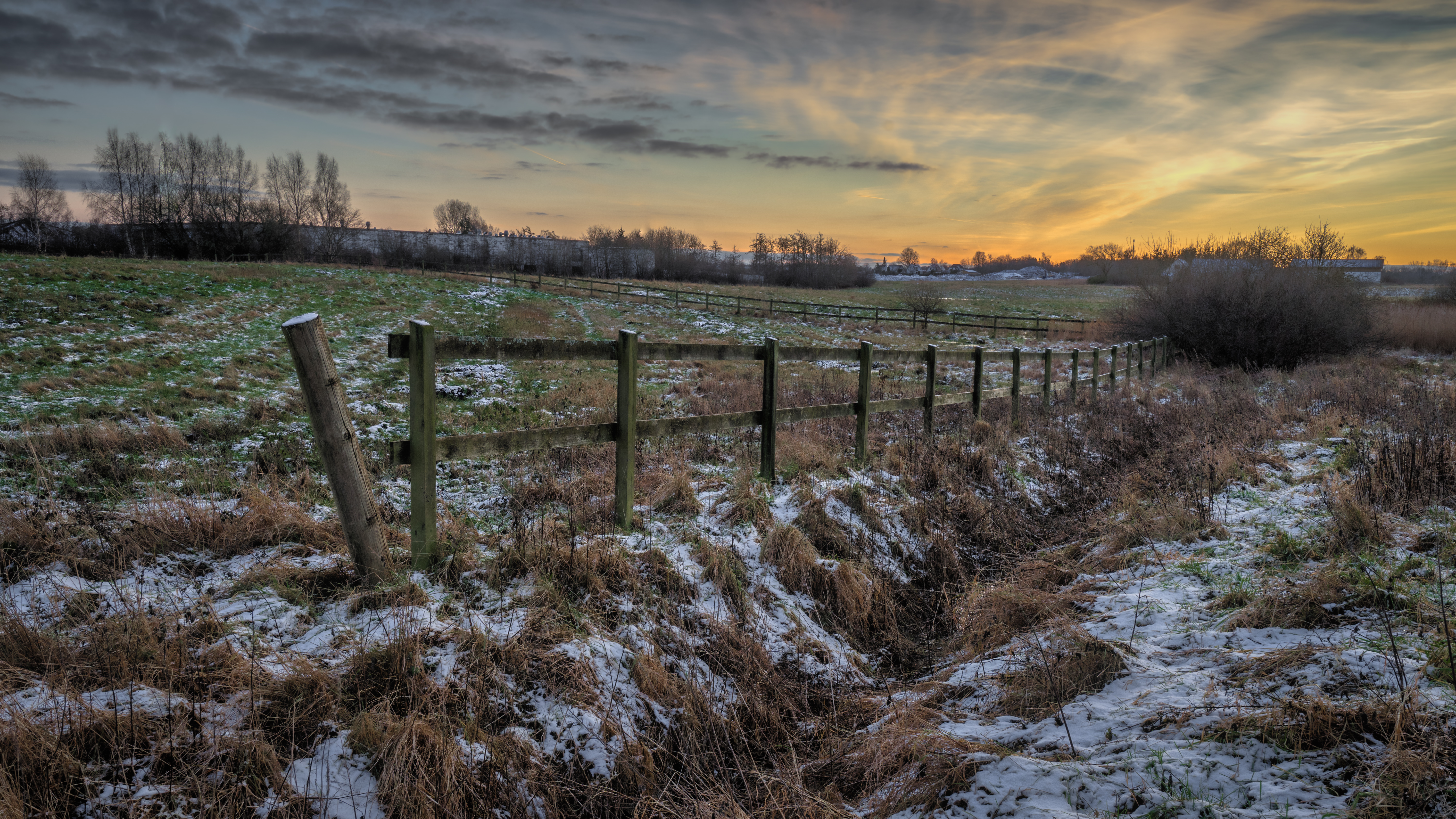 Also from my local area is the below picture of the weirdly curved tree on the edge of the forest. I absolutely love the colors and composition in this one.
Also from my local area is the below picture of the weirdly curved tree on the edge of the forest. I absolutely love the colors and composition in this one. 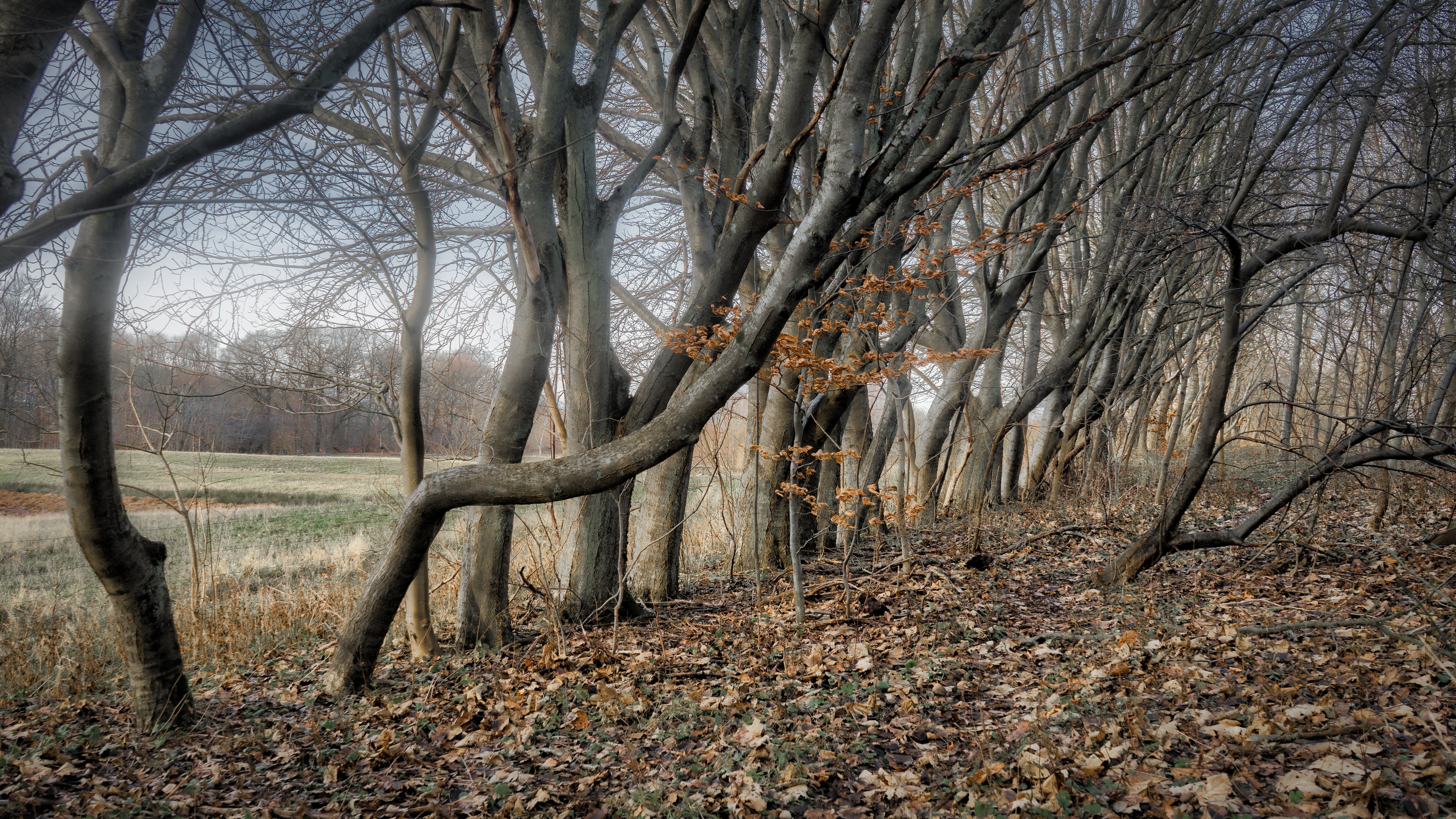 Last but not least, from a trip into Copenhagen and beyond, this image was taken at a part of the city called Ørestad, which has only existed in the past 10 years or so. The picture of a train leaving the station was very nicely captured, in my own opinion, with the exposure length at a perfect 0.6 seconds, which added juuust the right amount of blur... again, in my own opinion.
Last but not least, from a trip into Copenhagen and beyond, this image was taken at a part of the city called Ørestad, which has only existed in the past 10 years or so. The picture of a train leaving the station was very nicely captured, in my own opinion, with the exposure length at a perfect 0.6 seconds, which added juuust the right amount of blur... again, in my own opinion.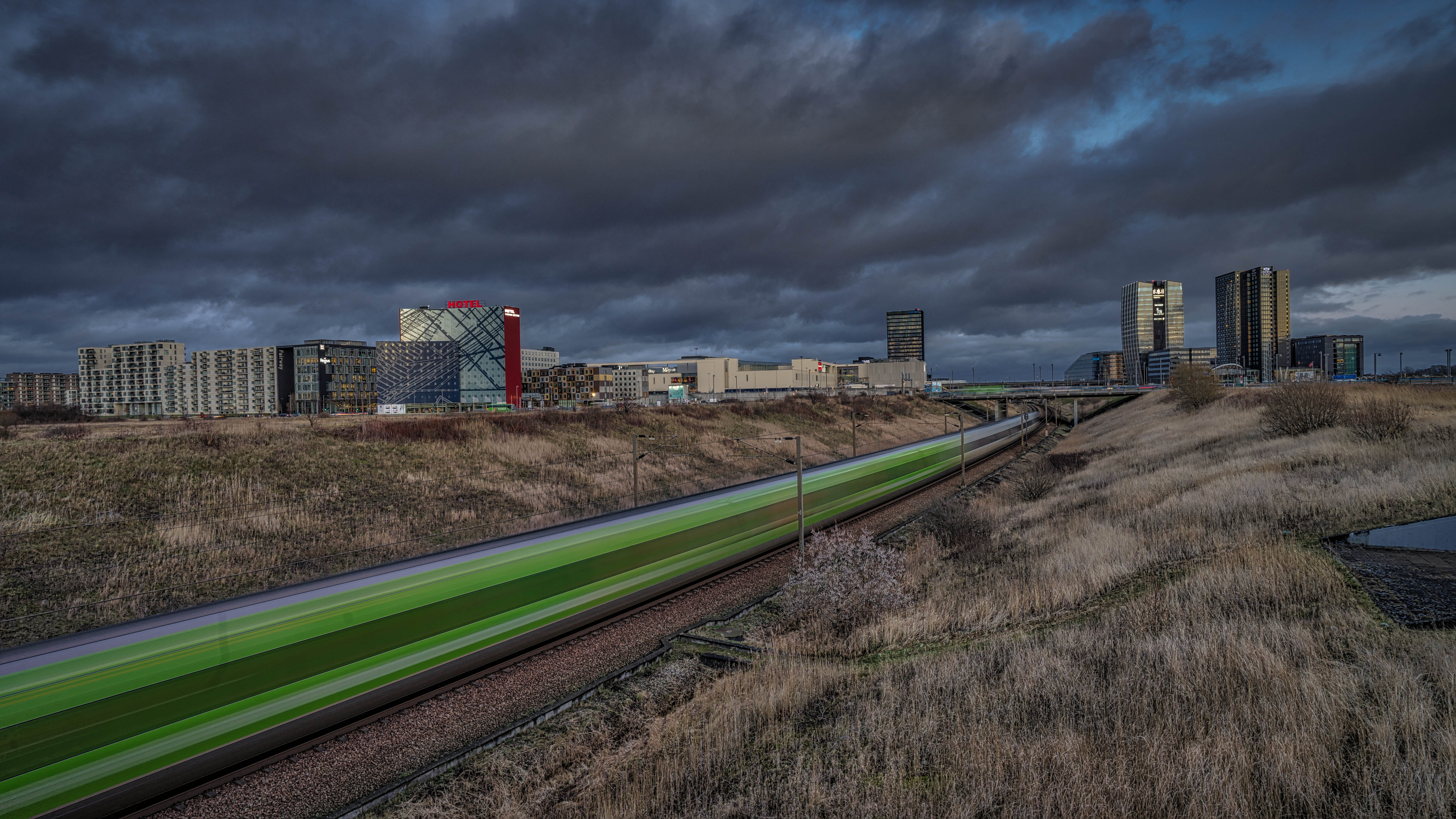 I took several more top-notch pictures on all of those trips, but they will have to wait. These are just examples of what I've been up to in the last few months and hopefully a little bit of evidence that both my mastering of my camera and my ability to capture the beauty I encounter have indeed improved.
I took several more top-notch pictures on all of those trips, but they will have to wait. These are just examples of what I've been up to in the last few months and hopefully a little bit of evidence that both my mastering of my camera and my ability to capture the beauty I encounter have indeed improved.
I guess we'll see in a year from now.
It started back in August at a birthday party for my brother and niece. Out of nowhere my brother hands me a piece of paper stating that he and his girlfriend won't be buying me any birthday or Christmas presents for the next several years. I'm like, "What's happening? It has to be some kind of joke, except, I don't get it."
Then, after a few minutes, he hands me a package, and again, I'm confused. My birthday was months ago. We are not here to celebrate me. Why are you giving me a present? Well, I proceed to open the package, and what is that? Out of the wrapping paper appears a box containing a Sony FE 16-35 mm Vario-Tessar lens with Zeiss optics. At this point, I'm utterly confused. First he doesn't want to buy me any presents, and then he hands me this... It takes several minutes for me to put two and two together. The lens I'm now holding in my hand is my birthday/Christmas present for the next several years. My brother and I usually don't buy each other huge gifts. This is exceptional. This is unheard of. This is awesome!
Once my brain manages to bring the emotional roller coaster ride to a halt, I start to realize what this means. The lens that is now in my possession is one that would have taken me years to save up for, and that's provided I could muster the self-discipline required to save up at all, which is not my strongest suit.
It also means I will no longer have a technical excuse for not taking pictures that can compare with the best. I have the camera, I have the lens. It is now up to me to learn how to utilize this combination and to raise my artistic level to match the technology.
Well, two months later I'm starting to see the results. I have not made a shot by shot comparison to see the difference between my old Tamron wide-angle lens and the new one, but in my mind there's no doubt that the new lens provides visibly better results in terms of sharpness. Look at this image I took in Copenhagen a few weeks back. I just haven't seen that kind of sharpness in my pictures in objects that far away before. Sure, it was a clear, sunny day, but I'm pretty sure that's not the whole explanation.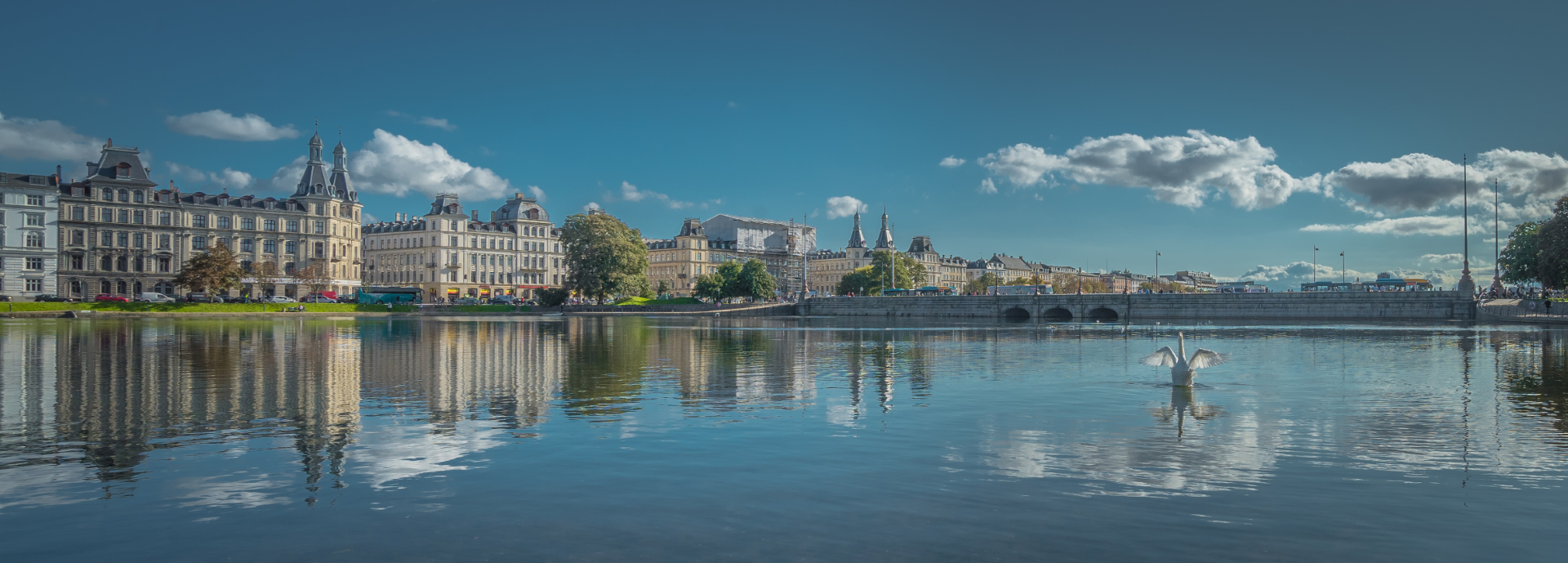 The next image is a low-light shot also using the new lens. Here too I'm very happy with the sharpness. Any non-sharpness is due to it being a very windy evening. Low-light was my big problem with my old camera and old lenses. You couldn't see where a blade of grass started and ended. It was all just an indistinct mess. Much better here, in my own opinion.
The next image is a low-light shot also using the new lens. Here too I'm very happy with the sharpness. Any non-sharpness is due to it being a very windy evening. Low-light was my big problem with my old camera and old lenses. You couldn't see where a blade of grass started and ended. It was all just an indistinct mess. Much better here, in my own opinion.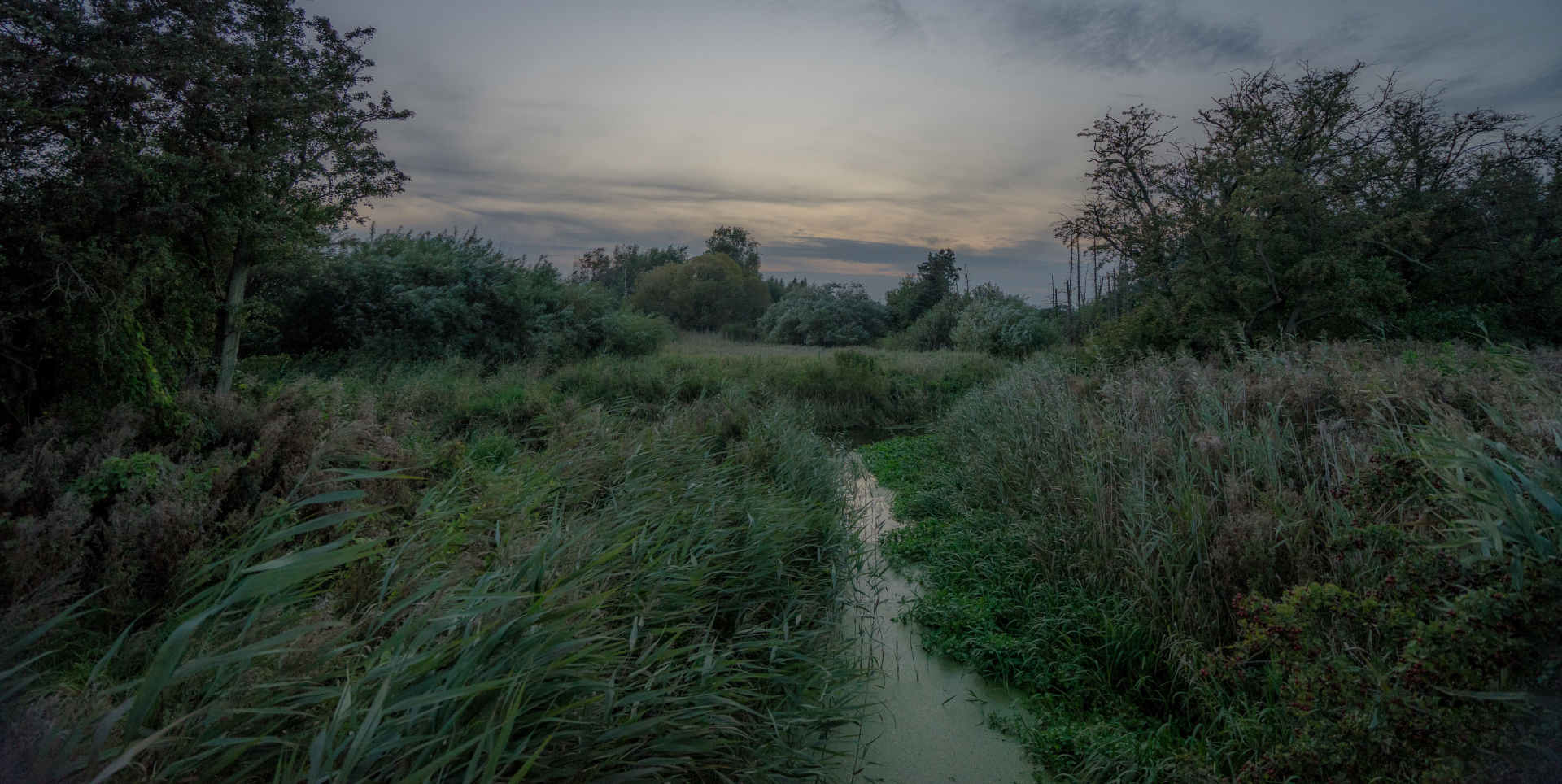 So while my new lens is the most important reason my photography has taken a turn for the better, there are other reasons, reasons that actually have more to do with post-processing than shooting.
So while my new lens is the most important reason my photography has taken a turn for the better, there are other reasons, reasons that actually have more to do with post-processing than shooting.
About a month ago, I finally lost patience with my old laptop that I normally used for photo editing. It was slow, constantly died from BSOD, and it was running out of disk space. At the same time, the price dropped on a laptop I'd had my eye on that would be a gigantic step up for me. So, I convinced myself I'd just saved a lot of money by not having to buy a wide angle lens and hit the "buy" button.
And what a difference it has made. Never mind how fast it is and that it has made Lightroom a breeze to run, the screen has made me realize that for all these years, I've been doing my post-editing all wrong. Looking at my pictures that were edited on my old computer, I see how awful they look. Way too much contrast, too much black, too much clarity. So, no wonder I'm not a rich and famous photographer! My pictures were ugly! That changes now.
Last... and maybe least, but it still deserves a mention: a brand new piece of photo editing software has given certain pictures the last oomph that really make them stand out. It's called Luminar and still only exists in a beta version for Windows (I think a fully developed version exists for Mac). While I love Lightroom and have no plans to abandon it, it's mostly suited for - and this may be due to my lack of skills in using it - a nice and proper result. Nothing wrong with that. But it takes more than that to get attention. Especially when you don't live near waterfalls, mountains, volcanoes, rivers, wild oceans, or whatever else will give you a natural advantage in photo contests such as the ones I frequent at ViewBug and GuruShots.
So here's a before and after example of a plain Lightroom edit and a Lighroom edit enhanced by Luminar. The first image is probably closer to "real life" than the second, but real life usually won't win you many "wow"'s and "oohh"'s.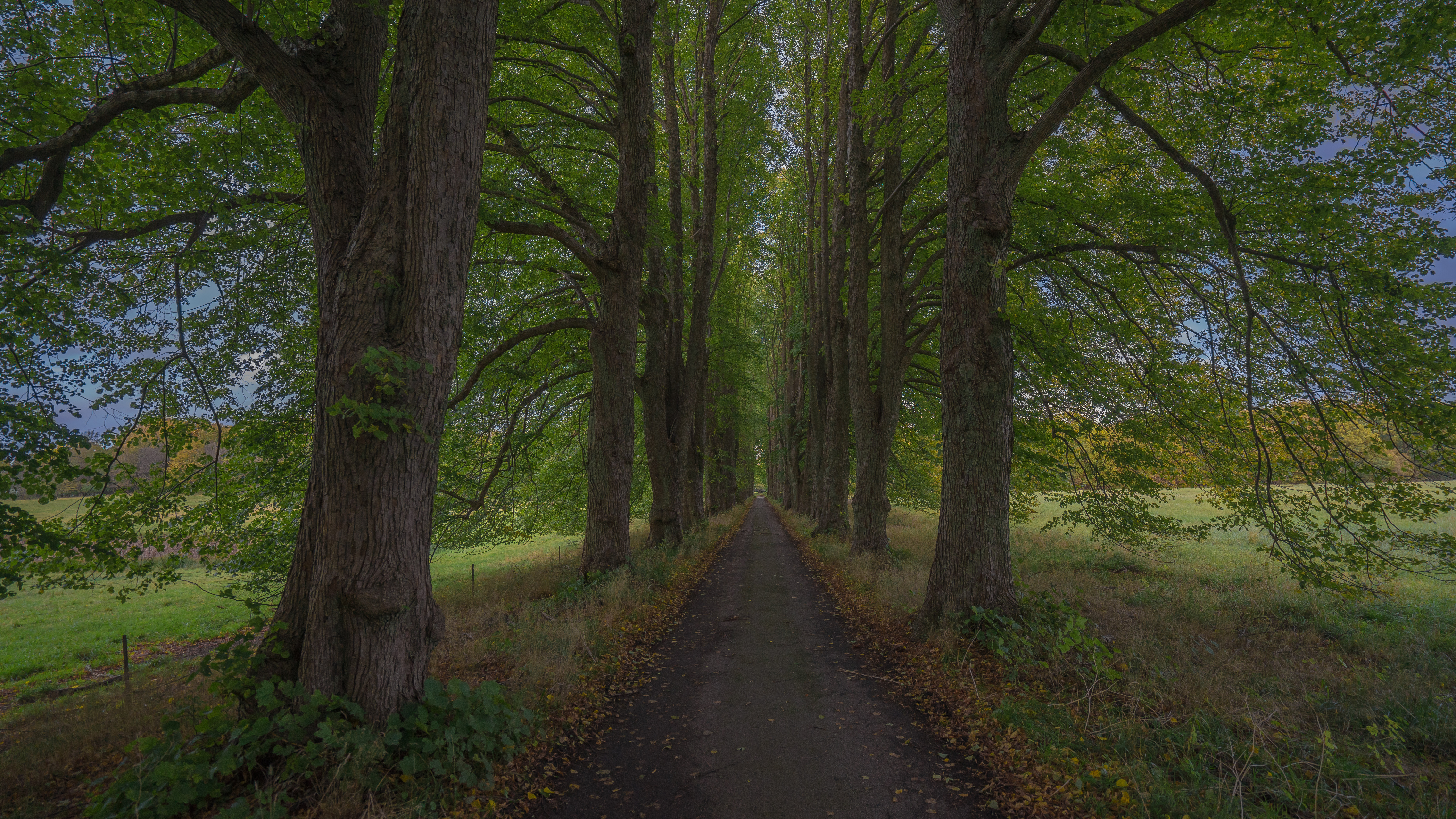
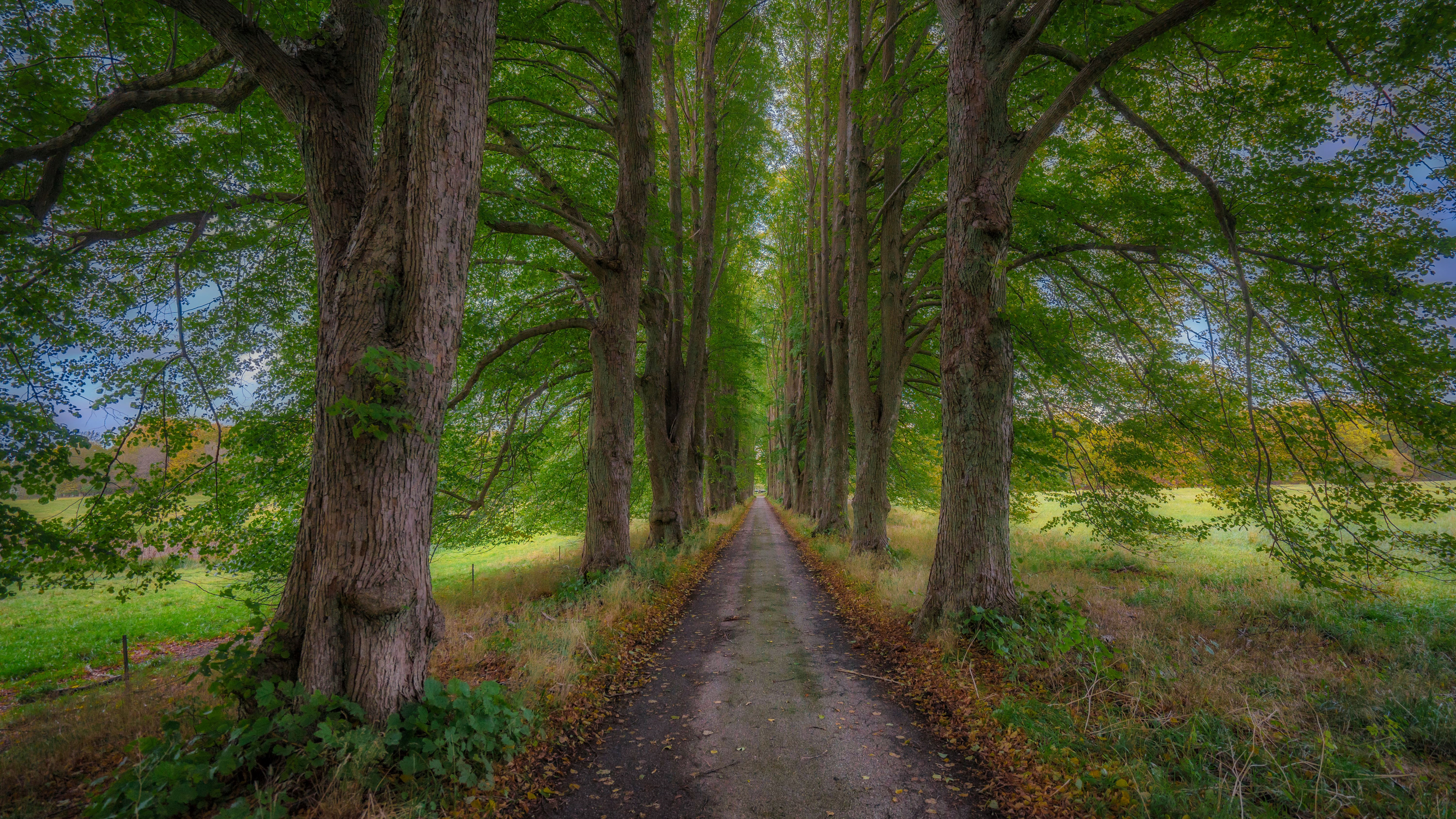 And just for the record, I don't post-process my images based on what I think will win contests (I won't win any contests, anyway), but mostly based on my own tastes. So, yeah, I prefer to look at the Luminar version, too, just like the majority of contest voters.
And just for the record, I don't post-process my images based on what I think will win contests (I won't win any contests, anyway), but mostly based on my own tastes. So, yeah, I prefer to look at the Luminar version, too, just like the majority of contest voters.
So, agree or not, in my own mind my photography is improving and that's really another reason I want to go out there and shoot - even if it's the same things I shoot over and over. It's invaluable practice for when I finally go to the really great locations.
To all my readers who have been anxiously waiting for new updates (hello, dad and brother!), I'm still here and finally ready to talk about my latest photo explorations.
It's definitely not for lack of activity that I haven't posted in a while. In fact, since my last post here 1½ months ago, I have taken more than 1000 pictures! Of course, 90% of them will never go any further than my hard drive, and the amount of pictures may sometimes be more an indication of not really knowing what I'm doing than a burst of brilliant creativity.
So this is the first step in attempting to catch up with everything that has happened since I bought the new camera. For that I have to go all the way back to April 10 and a beautiful vacation day that was just perfect for taking pictures, with just the right mix of clouds and blue sky, and temperatures that were finally bearable after a long cold, gray winter.
So I took my bicycle on the train and went all the way to the Copenhagen Airport metro station. No, I didn't get on a plane to Iceland or anything fancy like that. Instead I jumped on my bike and rode down along the coast, passenger planes passing right above me at low altitude for their runway approach. And yes, of course, I did stop to take pictures of them, with the Öresund Bridge, between Denmark and Sweden, in the background - a recurring ingredient throughout the day, it turned out.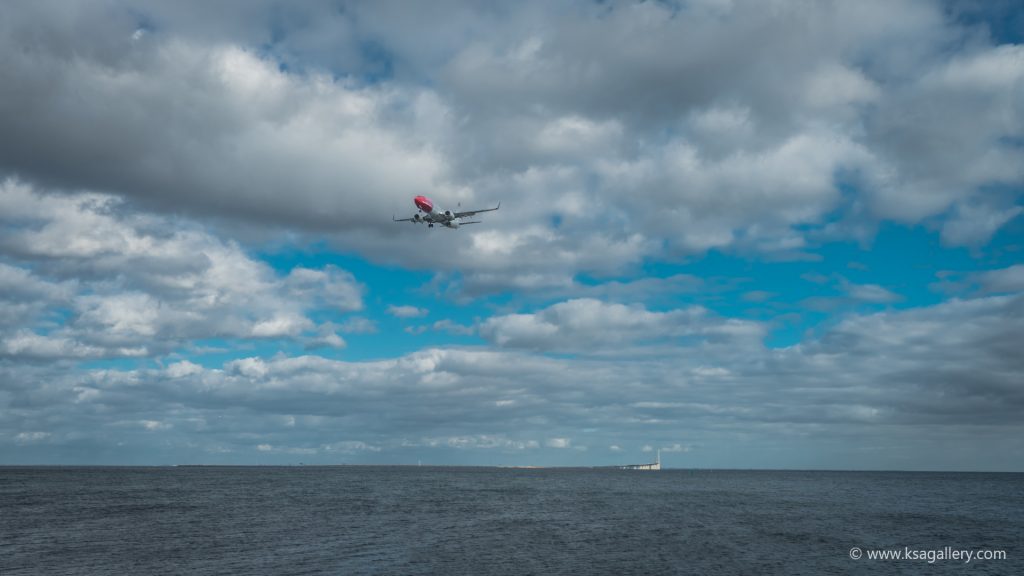
My target for the day was actually not the airport, but the village of Dragør, a small town south of Copenhagen strangely unaffected by the presence of Scandinavia's largest metropolis just a few kilometers to the north. In order to get there, I had to follow a bike path along Amager Strand, a beach area that I hadn't really given much thought during my planning. But as it turned out, the beach area was a scoop in its own right.
Now, by all measurements Amager Strand is probably nothing special - just a typical Danish beach - but 1) since I don't get out much, and 2) since I see everything with new eyes after I got into photography, to me, Amager Beach was a revelation. I was awestruck by its beauty and briskness, and I knew Dragør would have to wait a bit as I carpet-shot the area with my Sony A7 II.
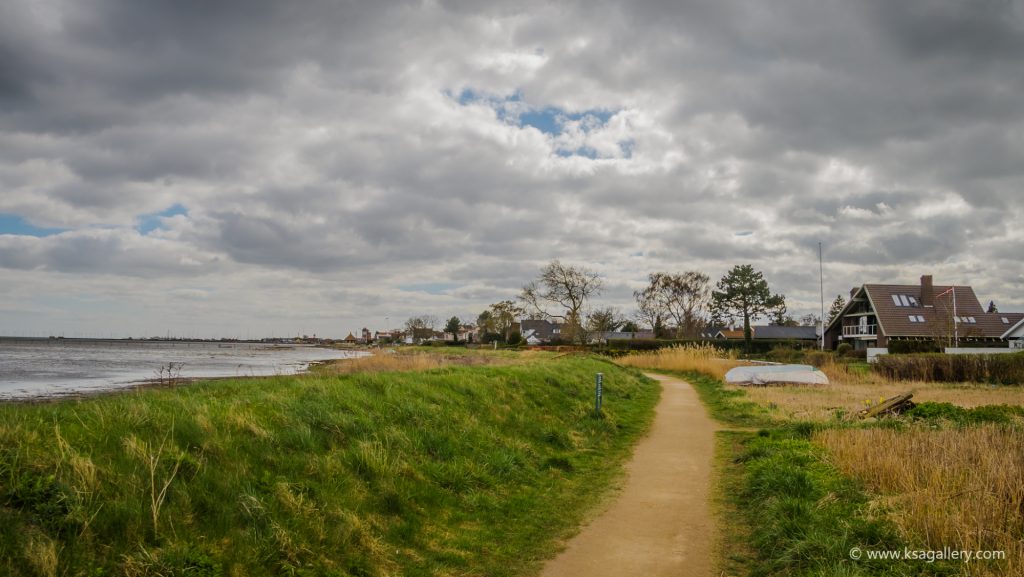
One of the most interesting features of the beach was a number of narrow docks stretching far into the water, a perfect opportunity for photographers such as myself looking for leading lines. The below image was one of the first of many, many that I took of this phenomenon and probably the best. Possibly because it was the only one I managed to take using a bit of long exposure. See, while I deliberately hadn't brought my tripod (it would have been too clumsy to carry it on my bike), I did bring my beloved Platypod, figuring that would be enough. And yes, it would have been enough if it hadn't been for the fact that you can't use a Platypod without your ballhead. And where was my ballhead? You guessed it: still attached to my tripod 40 kilometers away at home.
So what I did for this image was to put the camera on top of my backpack to elevate it just a little from the boards. But while I did get this shot in the bag, a backpack just doesn't cut it so I quickly reverted to hand-held.
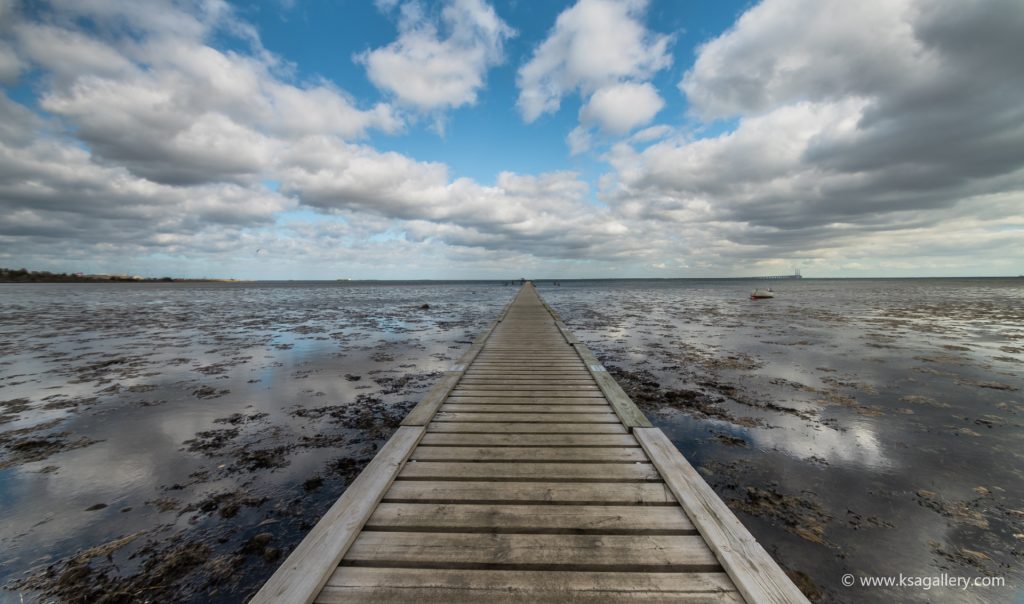
This next image is one of my favorites of the day. I like its simplicity and balance. I can only imagine the scene during a sunrise. That's for another time.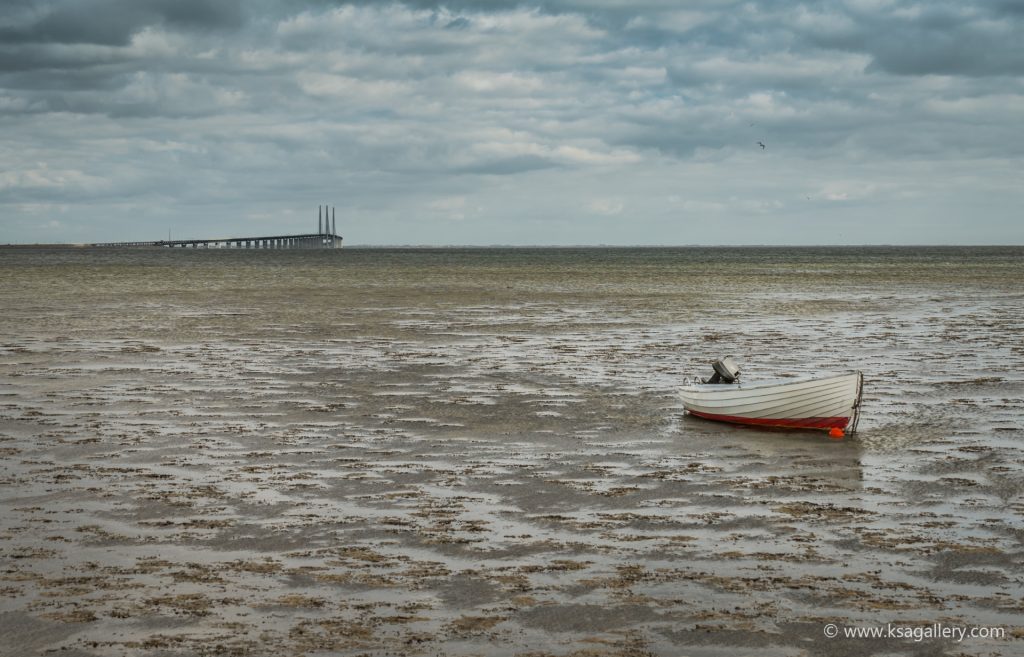
As I roamed the beach, planes kept coming in. When one had touched down on the landing strip beyond the dike, the next one would appear in the sky for its approach. I took dozens of pictures of planes. Most of them are useless because, although the planes came in low, they still appear rather tiny in the pictures - unless you crop them really tight, in which case they were just rather bland pictures of airplanes, and you missed the scene with the bridge in the background. This is where a monster zoom lens might have done wonders, but oh well.
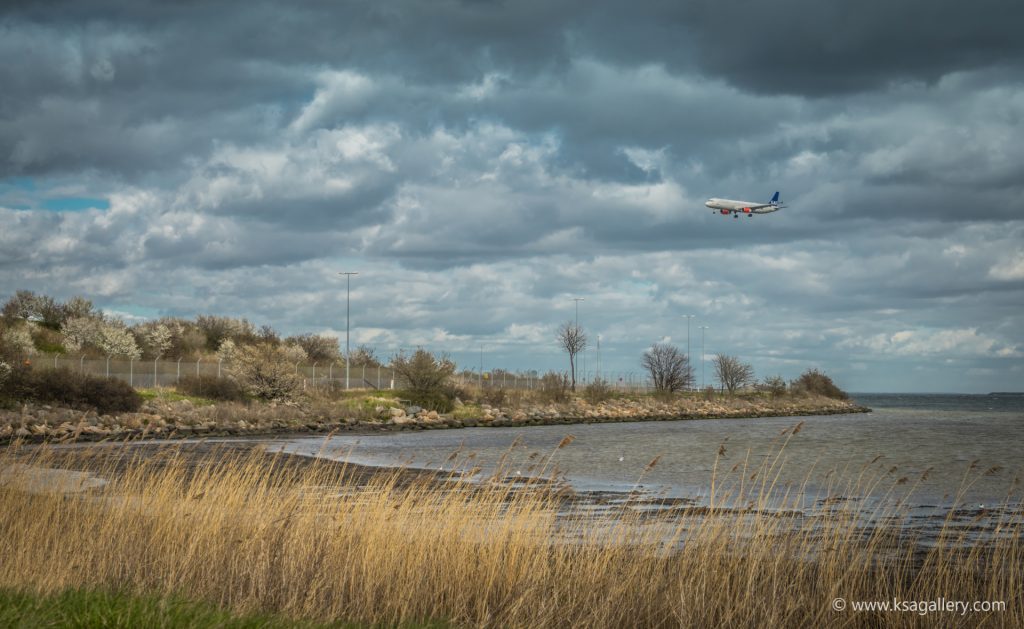
Well, I finally reached my destination, the town of Dragør, famous for its yellow thatched-roof houses such as this one in the image below. Entering the village, you feel like you are stepping 100 years back in time.
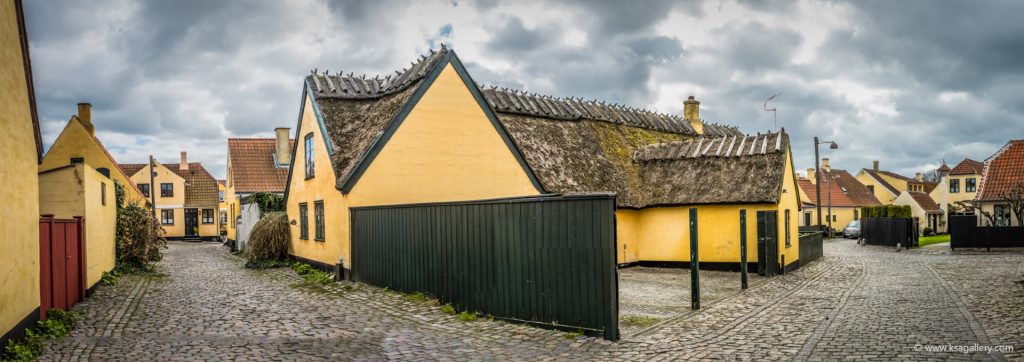
It didn't hurt that, just as I was walking down the street, a crack opened in the clouds and allowed rays of sunshine to shower the houses in the kind of light that makes a photographer's arm hairs stand up.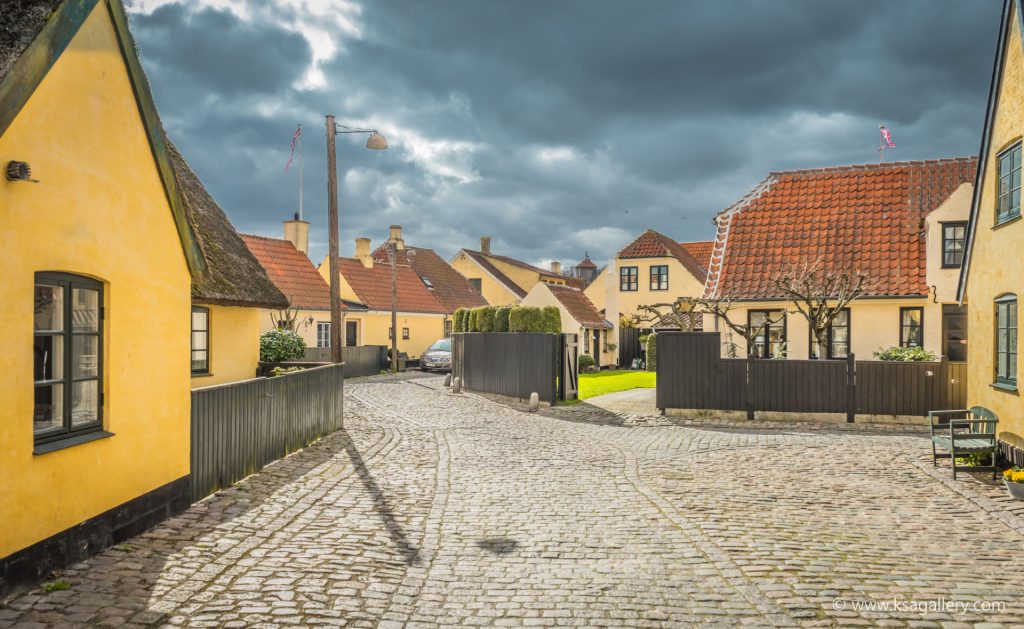
After walking around town for a while, I spent some time at the local marina. I included a picture of that in my last post, so here instead is another one I took there of two seagulls chasing each other.
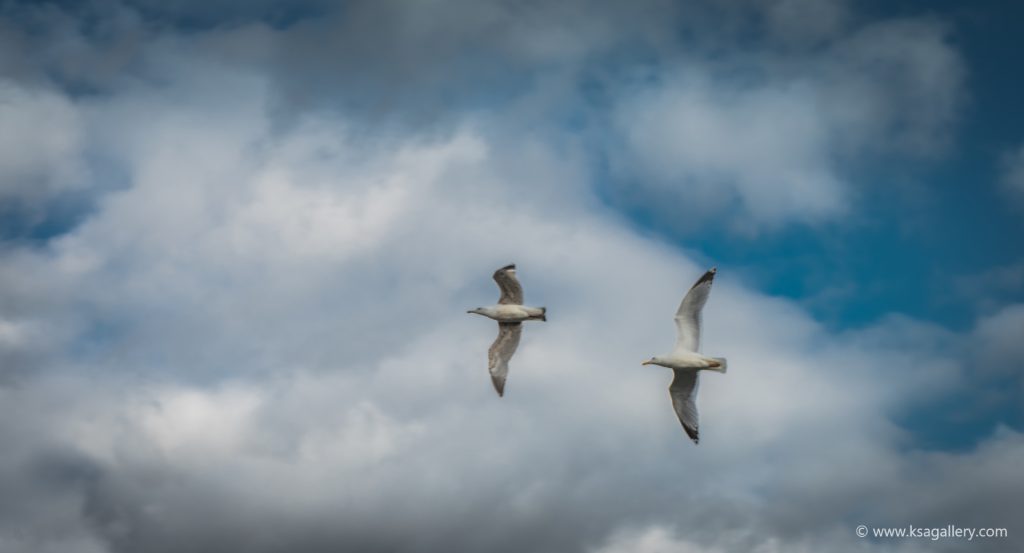
My day of shooting was coming to an end. I fought my way back to the airport on my bicycle with a head wind that felt like a cyclone, but I had enough energy to capture this stitched panorama of Terminal 3 that I was quite pleased with.  I actually captured in the neighborhood of 400 pictures on this day alone. It seemed like every way I turned, every airplane I saw, every building I passed was an opportunity that couldn't be missed. I ended up with a ridiculous amount of very similar pictures with only a few great ones. In hindsight, I regret not using the zoom lens that I do have (270 mm), but then again, that would have required a tripod... and a ballhead.
I actually captured in the neighborhood of 400 pictures on this day alone. It seemed like every way I turned, every airplane I saw, every building I passed was an opportunity that couldn't be missed. I ended up with a ridiculous amount of very similar pictures with only a few great ones. In hindsight, I regret not using the zoom lens that I do have (270 mm), but then again, that would have required a tripod... and a ballhead.
This blog is mostly an opportunity for me to show off my best work. For every picture I post here, I have 200 that are not as good. But this time I'm going to talk about my annual failed attempt to take pictures of the New Year's Eve fireworks.
Since getting my Sony A33 camera six years ago, on most New Year's Eves I've gone outside after midnight to capture the spectacular spectacle of the neighborhood exploding in fireworks of all colors, sizes and price levels. And every single time, on reviewing the pictures, I must conclude that... they kind of suck.
I have tried all sorts of settings, following the advice of the experts, but something just isn't quite right. In my mind, I'm going for something like this:
I want not just the fireworks themselves, I want the surroundings, the people, the celebration, the awe... and of course, some well-defined, colorful blasts.
The good news is that I feel I'm getting closer every year. The bad news is, I'm nowhere near what I envision inside my head. And I may also be on the verge of concluding that the conditions for great fireworks photography are just not present in my local area.
Look at the picture below from the other night. We have the burst, we have the people, we have the street. But the problem with this, and my other pictures, is the utterly black Danish winter night. No amount of long exposure (my pictures shown here are between 3- and 15-second exposures) can turn blackness into anything other than blackness, and no post-processing can reveal details that even the human eye can't see.
The next picture is just a 5-second exposure over nearby housing communities. Apart from battling the utter darkness, it was a challenge in post-processing to tone down the light from windows and streetlights in order to make the fireworks stand out.
This next one may be my own favorite of the night. The bursts of fireworks are wonderful, and overall, it's the best-lit shot of the bunch. In this, as in some of the other shots, I have removed the trailing light of the rockets that is a result of long exposures. I realized, as I was looking at the pictures, that in real life you don't see the trailing light and the explosion at the same time. In real life, you see the trailing light, then the explosion.
The last picture is pure cheating. The three big bursts of fireworks were taken from some of the other pictures and 'shopped into a 15-second exposure of the neighborhood. The real bursts were nowhere near as big, but dammit, this comes closer to how I remember it than the actual pictures showed, so I have no scruples doing this. Whether I did it well enough to fool anyone else is another matter, but there! Now you know.
Time will show if I feel motivated to go out again on the next New Year's Eve and try to improve on these results. What I need to do is to go where there is more light on the ground and more people gathered. And the question is if long exposures are always the way to go, or if quick bursts of 7-10 shots might produce some keepers.
Check back in a year to find out!
As a non-religious person my interest in churches has always been... hmm... how shall I put it? ... rather limited. But since my photography hobby got the best of me in the last few years, I have come to appreciate them more... if only as photo subjects.
So the other day when my wife and I went on a weekend excursion to Roskilde, one of the things I was looking forward to the most was to explore Roskilde Cathedral with my camera. Now, Roskilde Cathedral is one of the largest and oldest churches in Denmark where many important people from Danish history are buried, including kings and queens.
Roskilde Cathedral was built during the 12th and 13th century (according to Wikipedia), and while it may not compare with famous cathedrals of Rome or London, it's plenty impressive and listed as a UNESCO World Heritage Site.
We were a little late in getting there so we only had about 30 minutes inside the church before they closed for the day. As we entered, one of the elderly ladies at the ticket desk told me to take my hat off. I obliged, of course, but immediately felt unwelcome and out of place. At first, I was afraid to even get my camera out and get on with the shooting, but when I did, no verger tackled me or grabbed my collar, so I started to relax a bit.
And relaxing was necessary, because I did not bring either my tripod or monopod, and like most churches this one was not well lit, requiring fairly long exposures for hand-held shots of about 1/5 second.
So first we have some indoor shots. The first one is actually not hand-held. I put the camera on the stairs leading up to the chapel and set it to a 2-second time delay.
The second shot is purely hand-held and shows the beautiful chapel.
The next one is a panorama made with my beloved cell phone camera. Normally you wouldn't want people in a church shot, but I think this father and his child grace the image and add just the right amount of disturbance in an otherwise very clean shot.
Another cell phone panorama. I can't get tired of those. Google+ made an automatic version of it that I kind of like, but of course it's a bit too outrageous to put on a serious photo site like this!
The below picture is an HDR shot using three exposures and denoised with Topaz Denoise, which I'm still learning to use. This part of the church is where the famous King Christian IV is buried.
Moving outside the church presented the opposite lighting problem: too much light. The sun was still high in a blue sky and created some harsh shadows that had to be fixed in post-processing.
Even my wide-angle lens wasn't quite wide enough to get the whole church in one shot, so the two first images were stitched together from two images that were shot top-down.
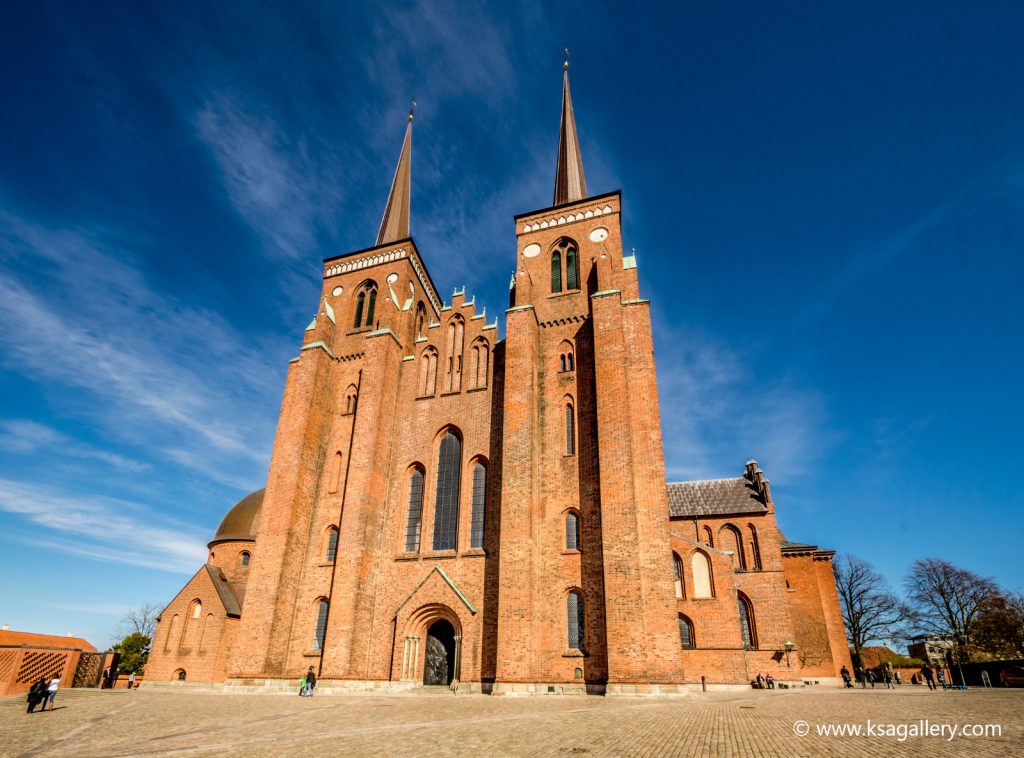
The below image was perhaps my favorite of the day, shot just as the sun disappeared behind that little dome.
Altogether, I was very happy with my output from that day. Still, we returned the next day because of some clouds that were hovering over Roskilde that I thought would add a little extra drama. The last one is another cell phone panorama.
My photographer guru Scott Kelby has written something to the effect that no self-respecting photographer will shoot outdoor pictures in the middle of the day. The blue hour and altogether the light around sunrise and sunset is the only light worth using.
Well, even though he's my guru, and even though I of course agree that those times of day are the best to shoot in, I have two problems with that: 1) using HDR you can do a lot to compensate for the harsh light of mid-day, and 2) if I could only shoot during those early and late hours, I'd hardly shoot at all. I know that part of it is laziness and unwillingness to get up early enough to catch the sunrise, or lift my butt from the couch in the evening. But when photography is not your main occupation, real life just makes it very difficult to get out there with your camera when you ought to. And even if you do have the opportunity, the weather might be a hindrance, especially in a country such as mine where it seems a thick cloud layer will often block any magical light that the sun might otherwise have served you with.
So, I'm sorry, Mr. Kelby, but I will continue to shoot even when the sun is high in the sky and the shadows are harsh and try to make the best of it. That's why the other day I ventured into Copenhagen to spend some time doing a little mid-day urban photo exploration -despite a clear blue sky and Scott Kelby's admonitions - and here's what happened:
 The above is a revisit of a motif I shot months ago with my cell phone: the corner of Danish Industry's HQ in downtown Copenhagen. The original picture went on to become my most popular submission to YouPic so far, much to my own suprise. Well, I wanted to do it again with my "real" camera and it turned out pretty well too.
The above is a revisit of a motif I shot months ago with my cell phone: the corner of Danish Industry's HQ in downtown Copenhagen. The original picture went on to become my most popular submission to YouPic so far, much to my own suprise. Well, I wanted to do it again with my "real" camera and it turned out pretty well too.
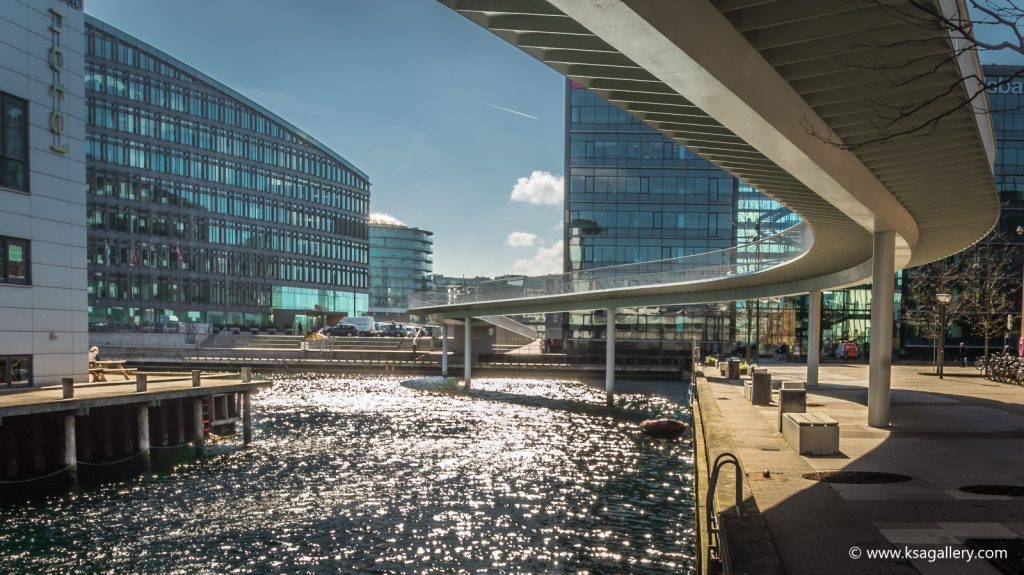 This one is my favorite from that day: the underneath of a new elevated bike path among modern glass facades. Conditions were difficult for taking pictures with, indeed, harsh shadows and even harsher sun reflections in the water. This was put together from three different shots.
This one is my favorite from that day: the underneath of a new elevated bike path among modern glass facades. Conditions were difficult for taking pictures with, indeed, harsh shadows and even harsher sun reflections in the water. This was put together from three different shots.
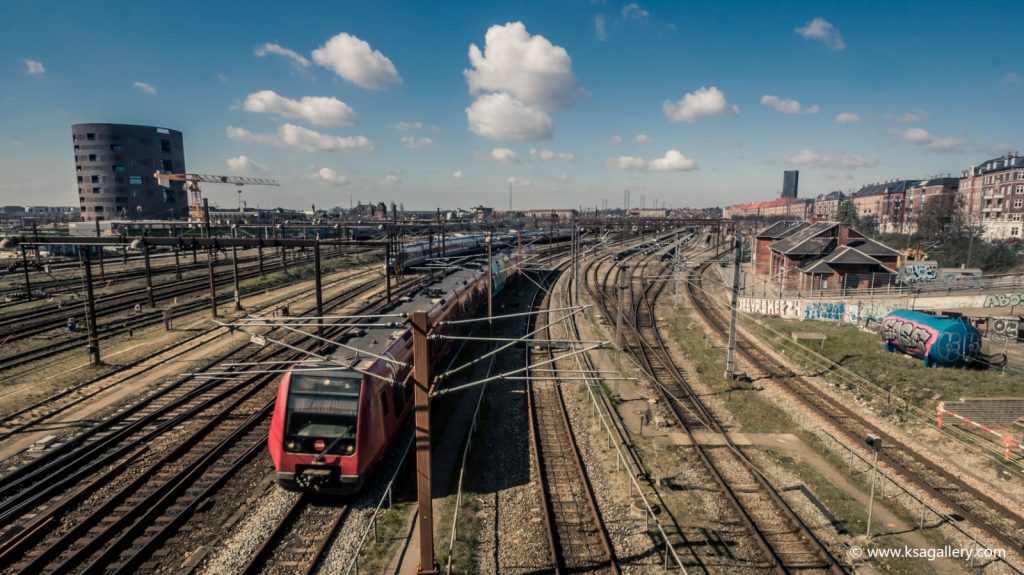 One of my goals for the day was to take pictures of trains. I did take a bunch, but nothing too spectacular. This one was my favorite. I love the wide railroad area near Copenhagen Central Station.
One of my goals for the day was to take pictures of trains. I did take a bunch, but nothing too spectacular. This one was my favorite. I love the wide railroad area near Copenhagen Central Station.
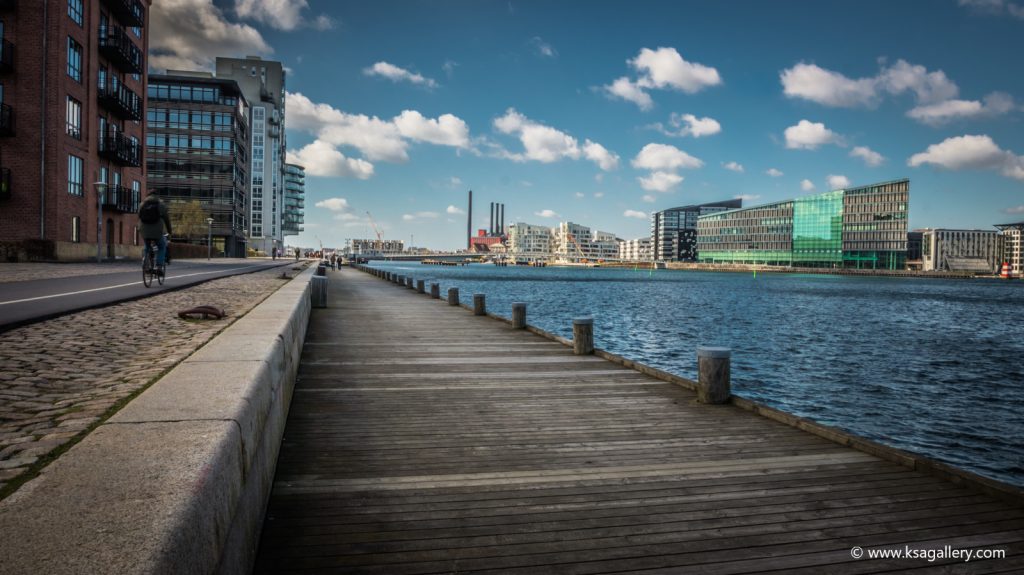 Another revisit of a scene I took with my cell phone more than a year ago that turned out really well. This isn't too shabby either. And yes, while I think this mid-day picture is perfectly fine, I can only imagine how gorgeous that glass facade must look in a beautiful, colorful sunset.
Another revisit of a scene I took with my cell phone more than a year ago that turned out really well. This isn't too shabby either. And yes, while I think this mid-day picture is perfectly fine, I can only imagine how gorgeous that glass facade must look in a beautiful, colorful sunset.
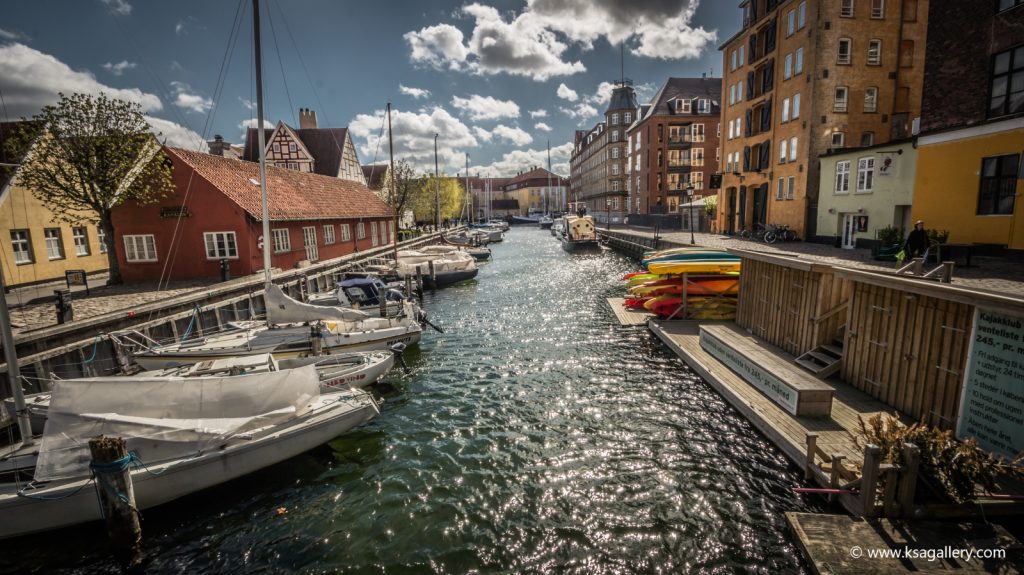 A canal in the part of Copenhagen called Christianshavn. The canals were one of my main objectives of the day, too, but I didn't quite find the right spots. This one turned out okay, but the light definitely was a challenge that again required three different exposures put together to overcome the shadows and the highlights.
A canal in the part of Copenhagen called Christianshavn. The canals were one of my main objectives of the day, too, but I didn't quite find the right spots. This one turned out okay, but the light definitely was a challenge that again required three different exposures put together to overcome the shadows and the highlights.
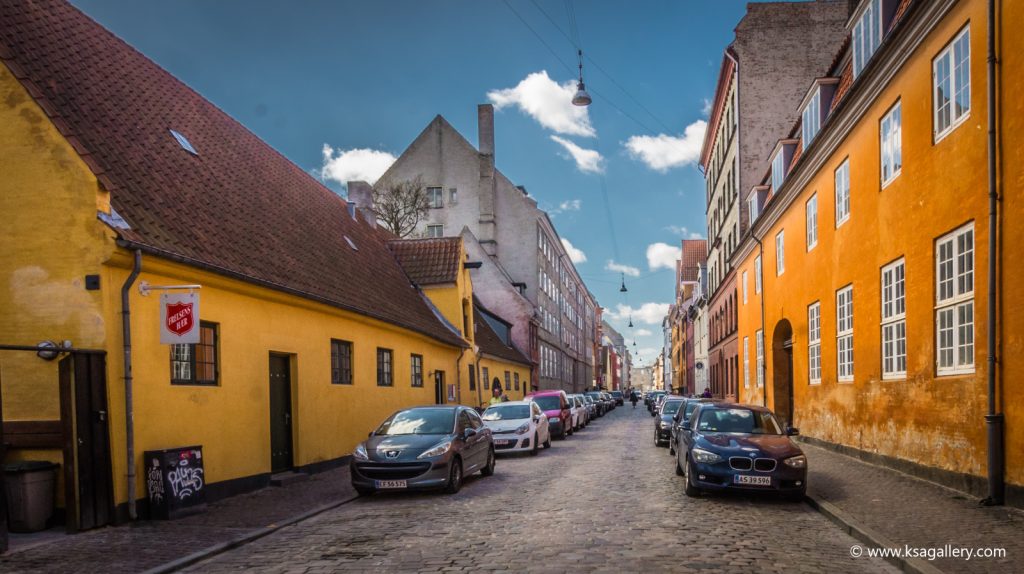 One of the things I realized on that day was that urban photography is often made difficult because of all the cars that are everywhere and that just get in the way of all the interesting buildings and other objects. Here I tried to make them work to my advantage in how the shiny metal contrasts the old buildings.
One of the things I realized on that day was that urban photography is often made difficult because of all the cars that are everywhere and that just get in the way of all the interesting buildings and other objects. Here I tried to make them work to my advantage in how the shiny metal contrasts the old buildings.
Finally, you may ask, where are all the people? Isn't that an important part of taking pictures in the city? Well, maybe. But that's where the landscape photographer in me takes control. In landscape photography, people are usually just in the way. So on that day at least, I avoided places with lots of people. Maybe that will be a challenge for another day.
The battery ran out after 30 minutes, I couldn't get my new smartphone controlled remote to work, and the few pictures I took were kind of blah. But... for the first time this year I managed to get out there with my camera and shoot a little bit, and it was great!
Actually, all it was was a walk around my neighborhood and up on a ridge running along a highway on one side and the cluster of houses on the other side that my own place is part of. I have been up there lots of times and taken lots of pictures. There is a pretty good view, and the houses line up in a way that make them suited for pictures. So I keep returning, if nothing else, just for practice or for the exercise.
Here are the three shots that I thought were decent enough to get posted here, including a panorama stitched together of three images, and an HDR image made of three different exposures.